We left Rhodes after staying there for a week. We completed two necessary tasks: purchased two propane tanks (turned out they couldn’t fill the ones we had) and a passerelle. For those who don’t know, a passerelle is a gangway used to board or leave a yacht. We knew we would need one in the Med as soon as we started Med mooring again.
Our next stop was Tilos. We took a day to get there and spent the next day (May 27) touring the island via rental car. We chose Tilos because it isn’t populated with tourists and has some interesting sites. In antiquity, Tilos was popular for its herbs, and it prospered during the Classical period, which was also the time when Irinna, a famous ancient Greek female poet lived. Now it is a quiet island, said to be more true to its traditions than the more developed neighboring islands.
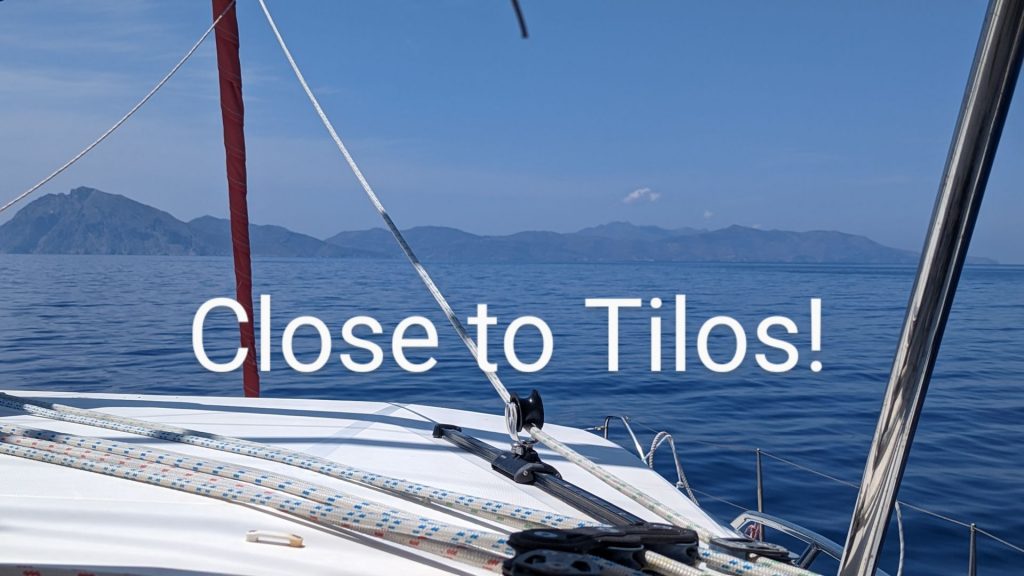
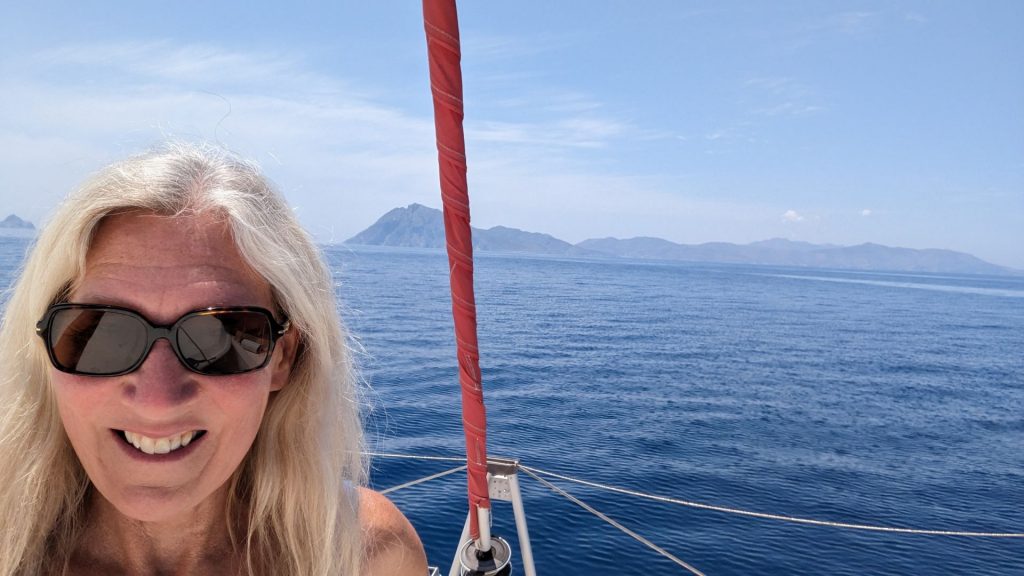
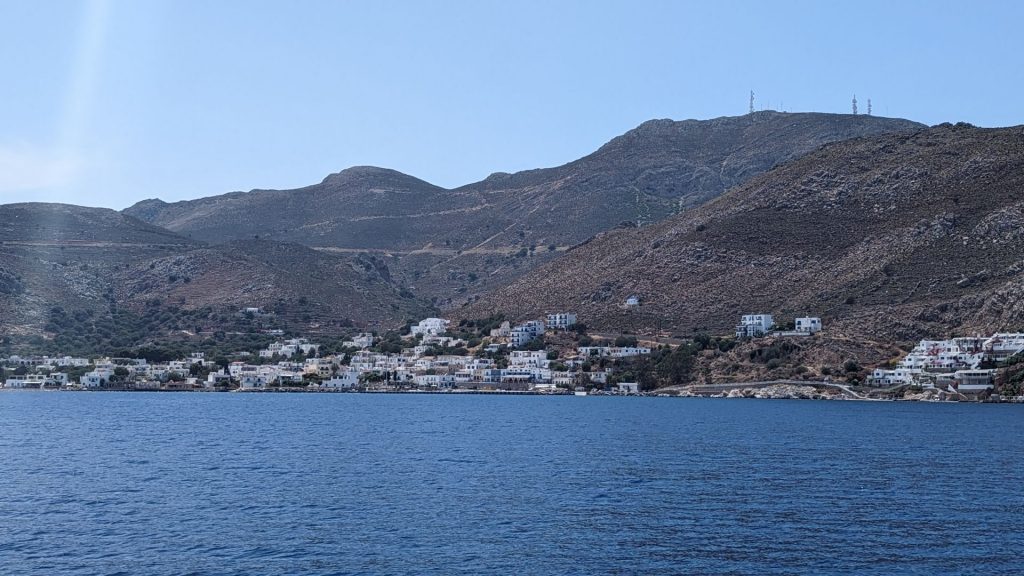
Our first visit was to Mikro Chorio. It isn’t wheelchair accessible so Michael waited in the car. Mikro Chorio is a deserted village standing between Livadia and Megalo Chorio, the capital of Tilos. After the year 1940, the village was gradually abandoned and most of the inhabitants moved to Livadia. Today, only ruins of impressive buildings and stone built houses can be seen. It is an amazing experience to walk through the abandoned village. One can imagine how active it once was. Some pics of and from the village:
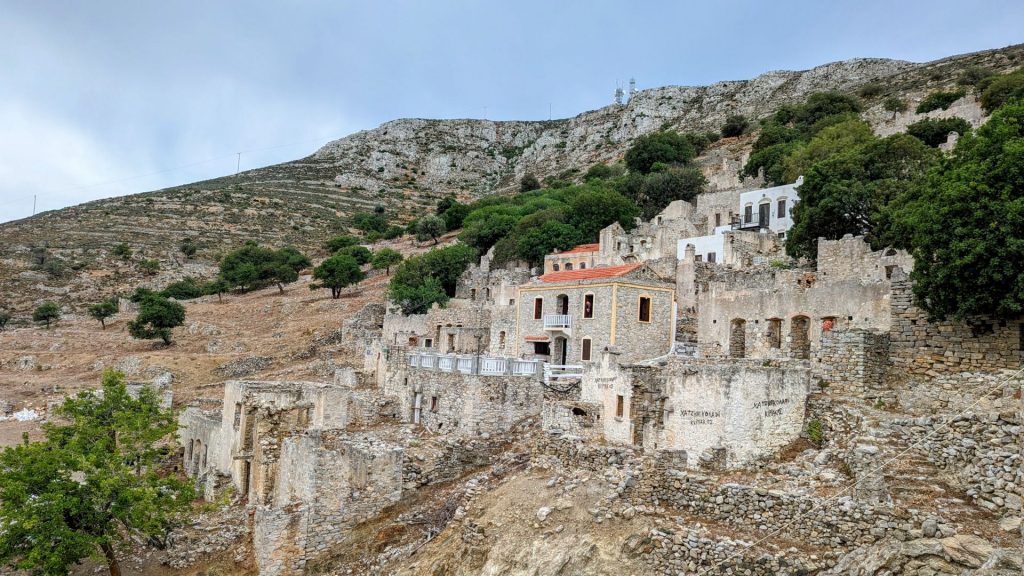
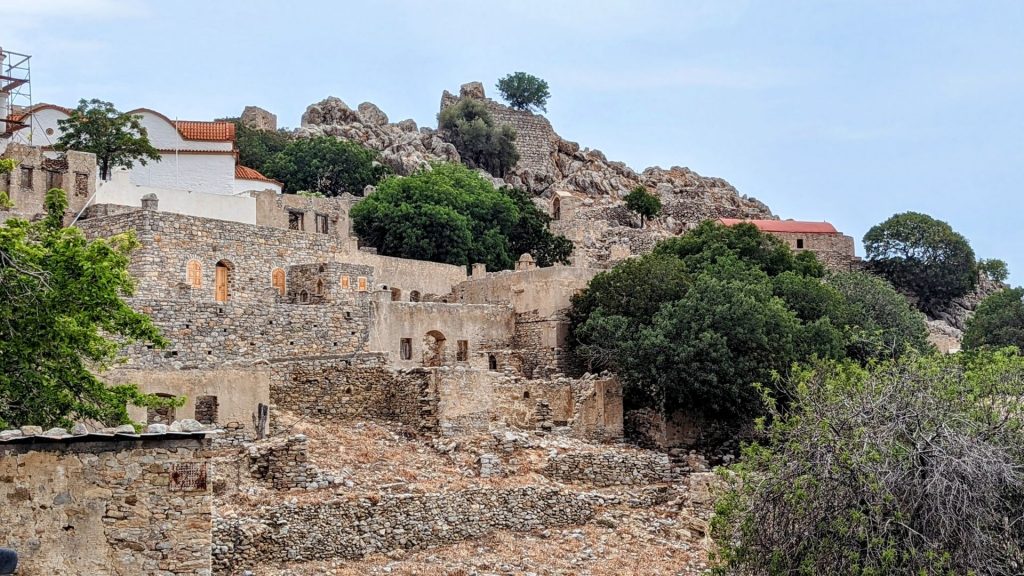
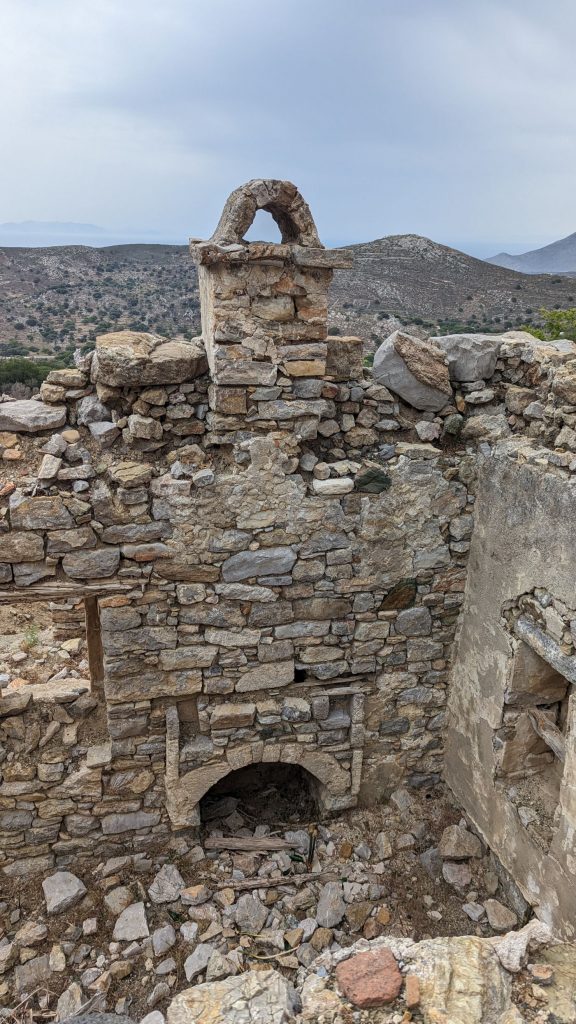
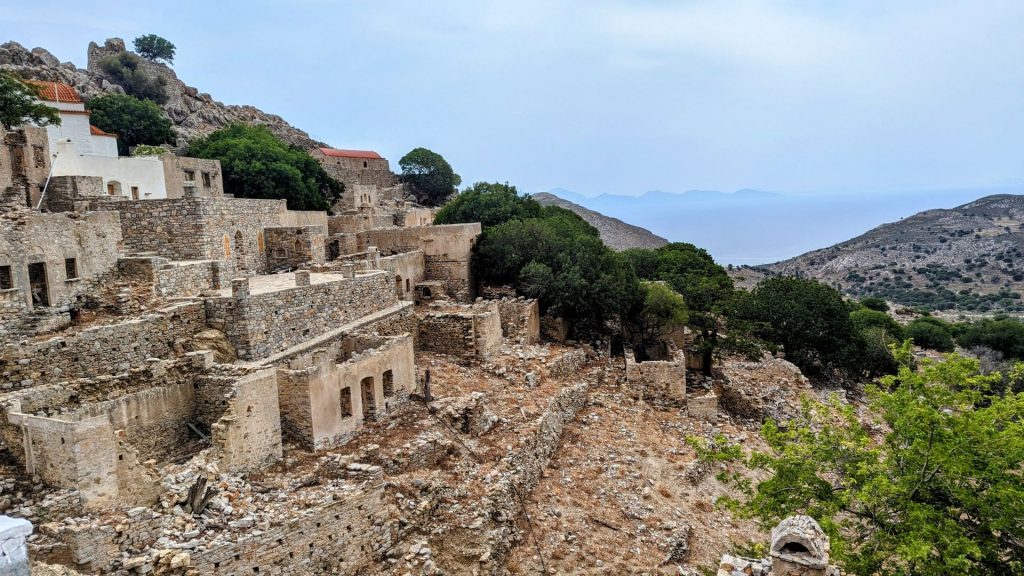
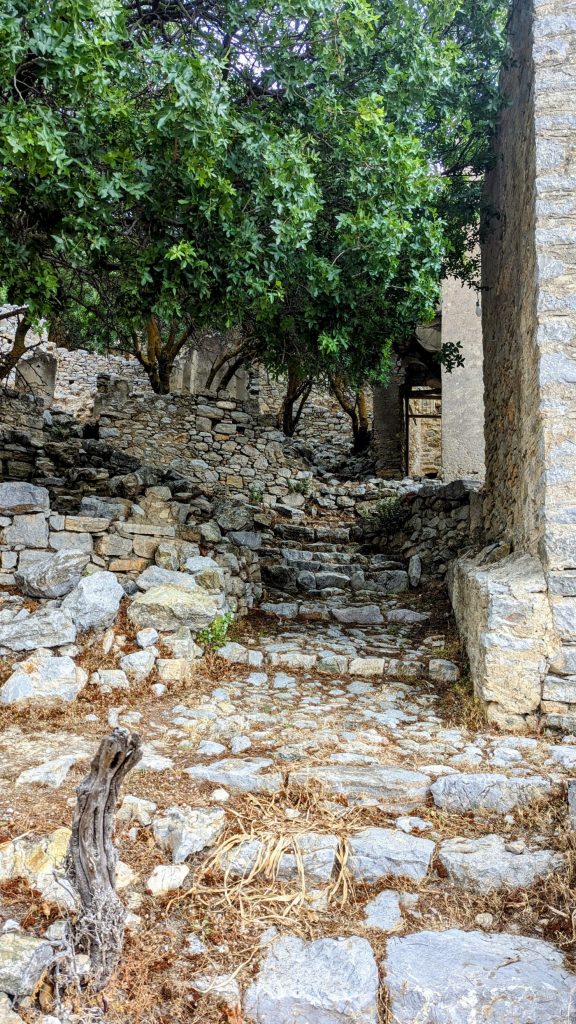
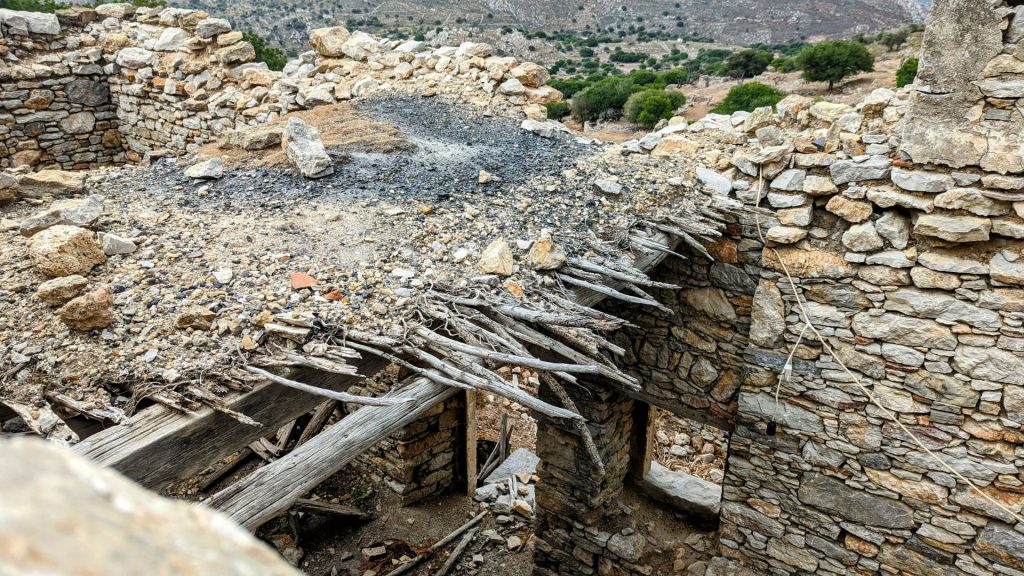
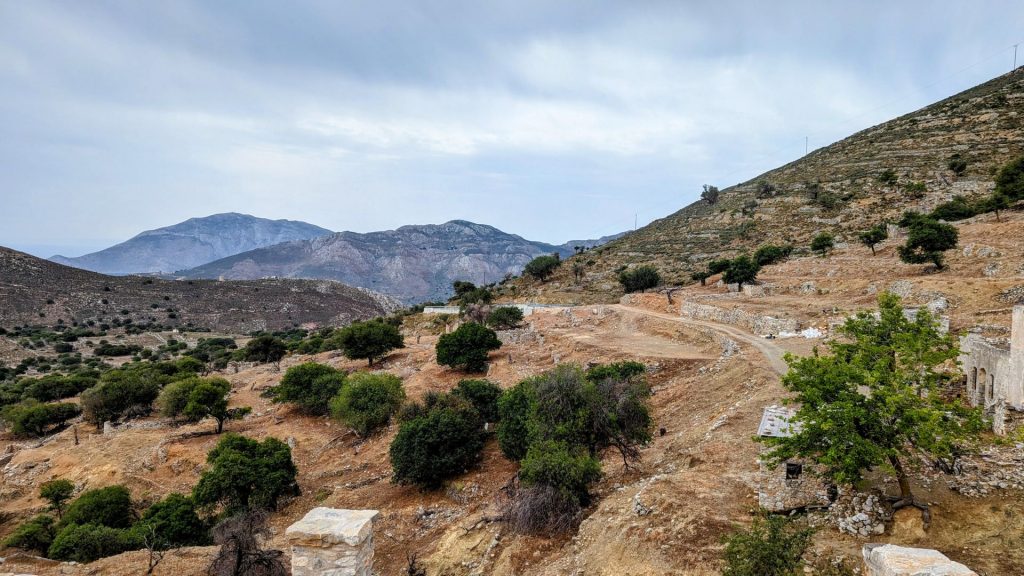
Our next stop was at the Charkadio Cave. Well, we didn’t actually go to the cave, but to the museum that displays the findings. The cave has become an important sight after a phenomenal discovery of 1971 by the geologist and speleologist Nikolaos Simeonides. His team brought into light Neolithic artifacts, including hunting tools and pottery. But the most important discoveries were of the fossilized bones of elephants, turtles and deer within the cave. According to scientists, dwarf elephants lived on Tilos 45,000 years ago and disappeared about 4,000 years ago. The museum contains actual fossilized bones as well as reproductions. This first picture shows the bones of a baby elephant. The human skulls give you an idea of just how small the elephant was.
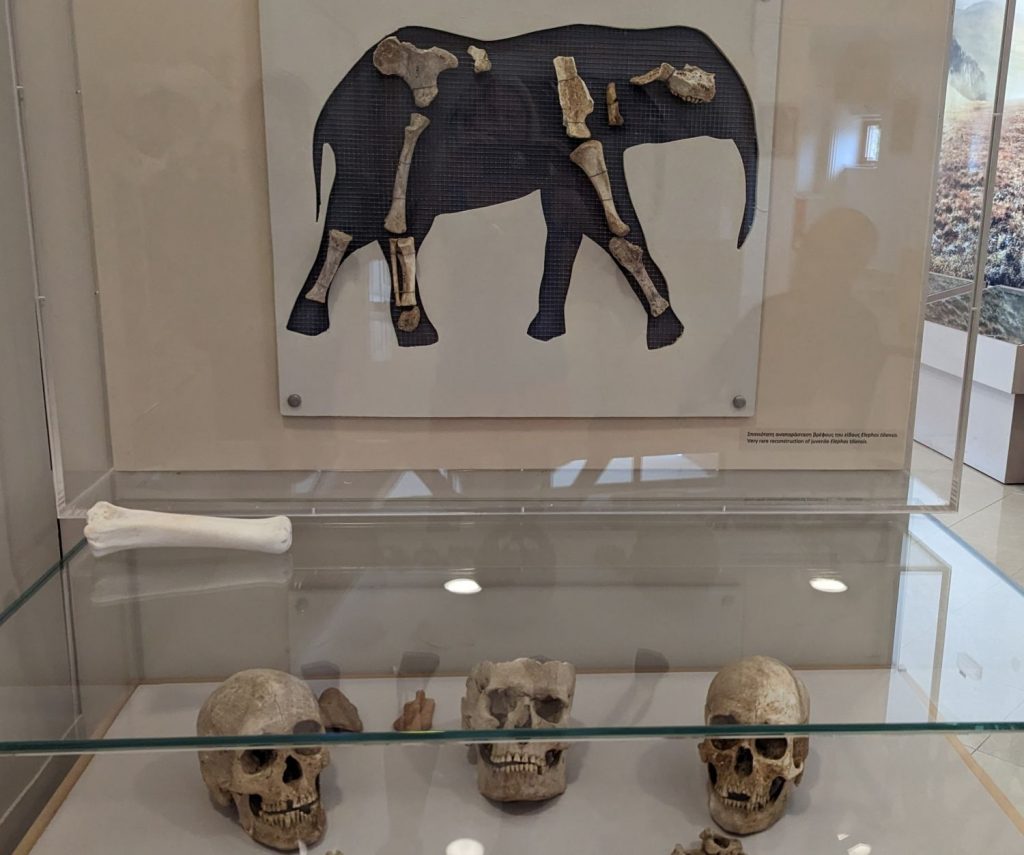
This is Michael sitting next to a skeleton of a dwarf elephant (full grown – see how small it is!!), made of both real and manufactured bones (the elephant, not Michael). 😉
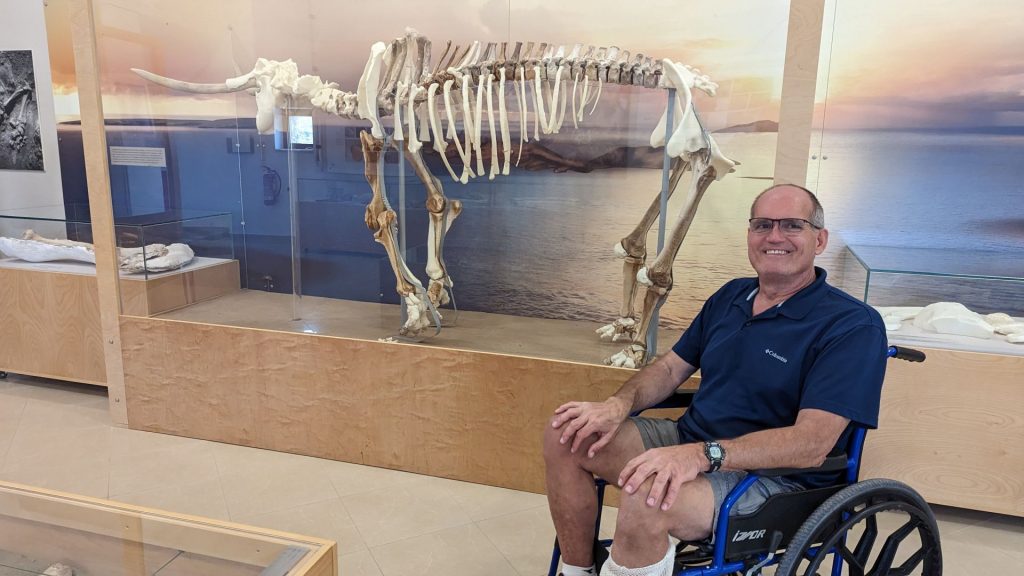
It was now time for lunch. We happened upon a small family run restaurant near a small harbor. (Small is the operative word.) We were greeted by a friendly group of people who appeared to be just finishing their lunch. They were part of the family who runs the restaurant.
We had a lovely traditional Greek meal. I had Ntolmades, Michael had meatballs. He couldn’t tell what type of meat it was. Ntolmades (which is apparently also spelled Dolmades) are stuffed grape leaves. I truly didn’t know what I was ordering, but I wanted to try something new and I knew it had something to do with grapes. It was delicious! The filling consisted of rice and . . . I don’t know what else, but I am sure olive oil and herbs were involved.
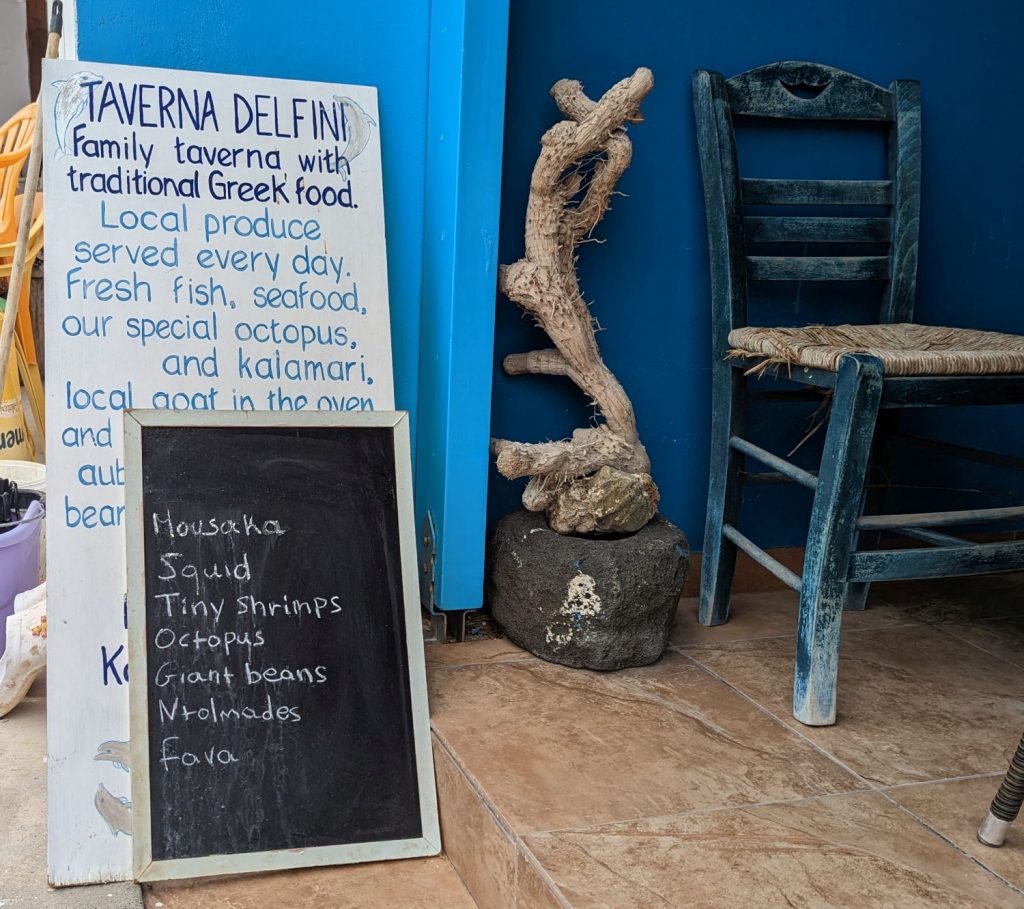
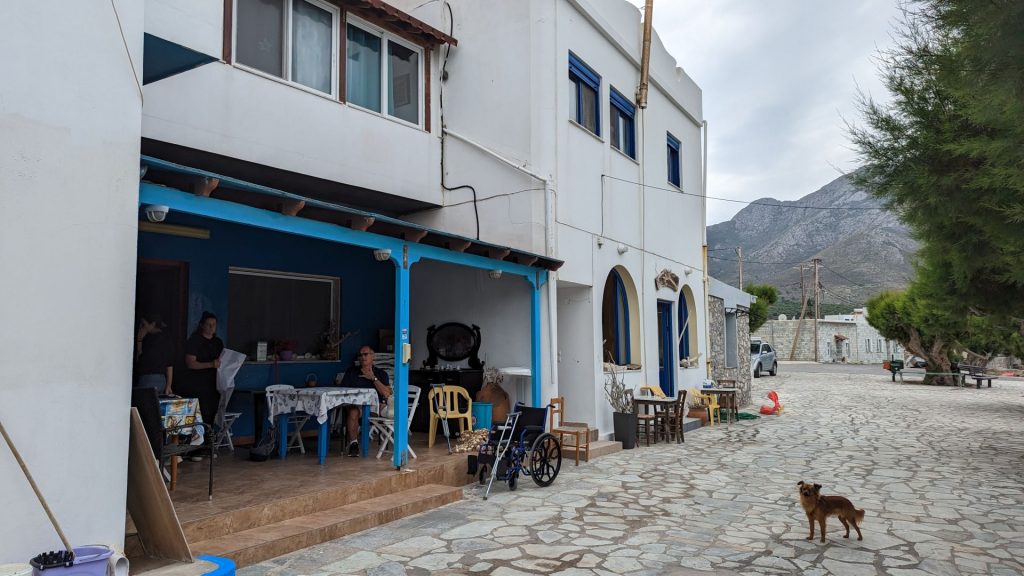
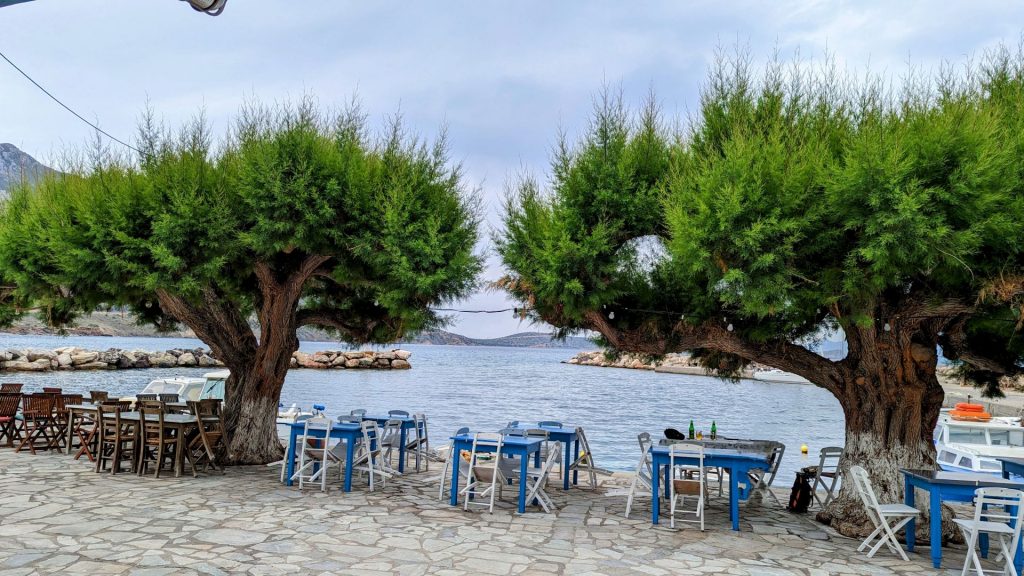
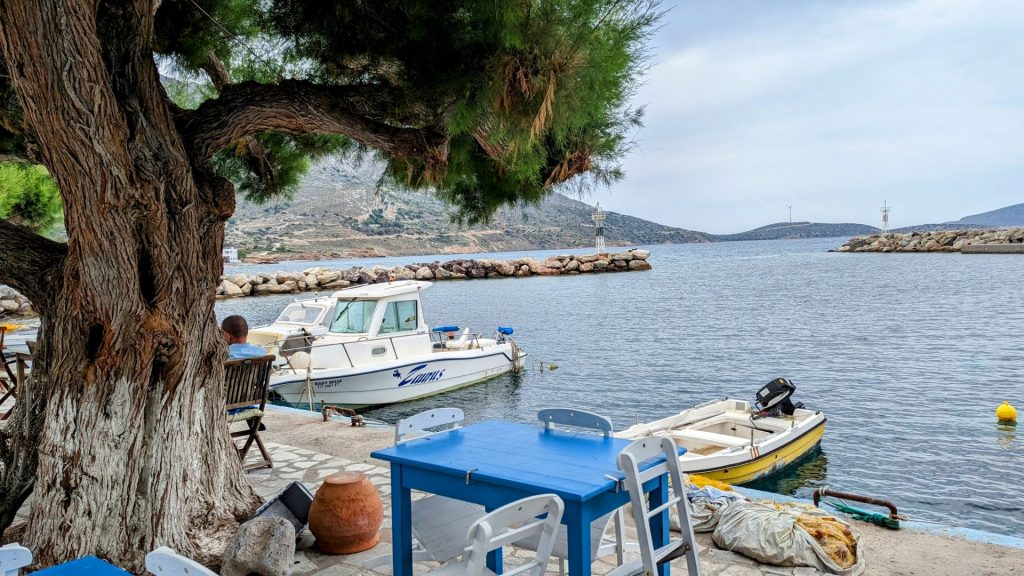
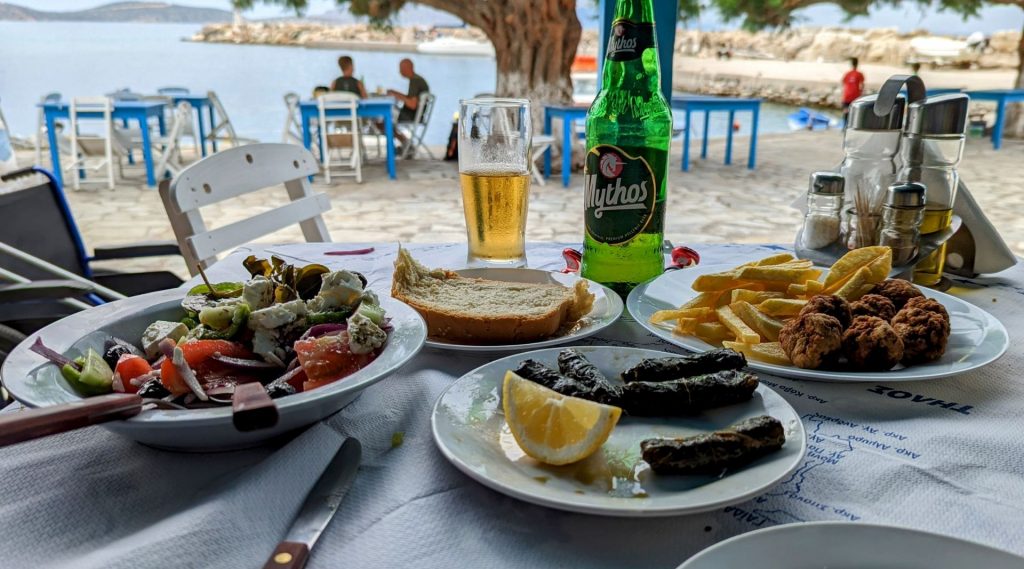
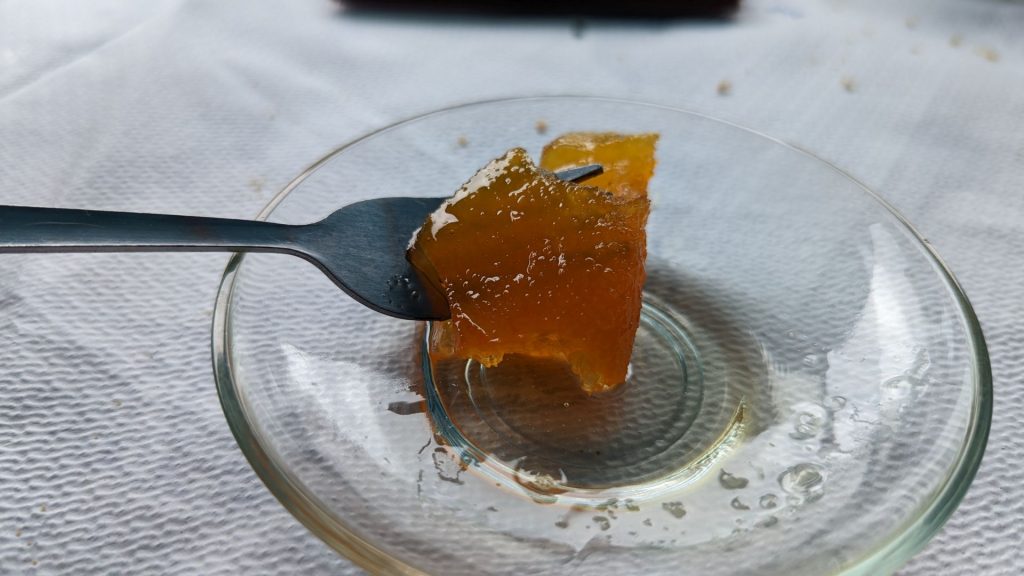
It was now time to take the spectacularly dramatic road high above the Aegean Sea to the impossibly perched, perfectly preserved Byzantine monastery – Agios Panteleimon. A remarkable structure, apparently disguised as a fortified-looking castle to deter Barbarossa and other pirates in their day, it is now “home to numerous cats, a visiting priest, and an annual name-day shindig on July 27.” (I didn’t see the cats, but I met the visiting priest – a very nice fellow who let me tour the monastery even though I was wearing short sleeves and shorts.)
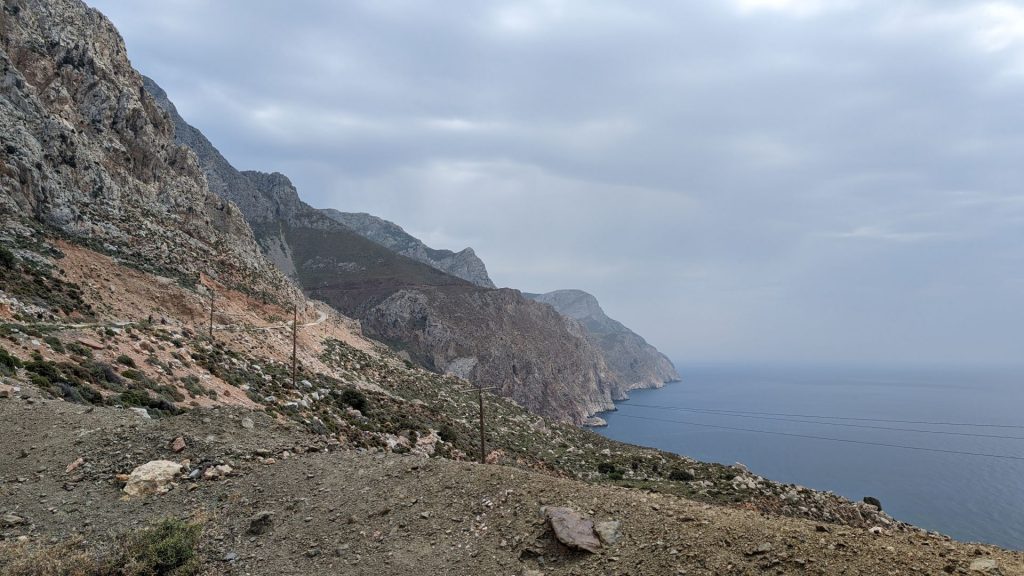
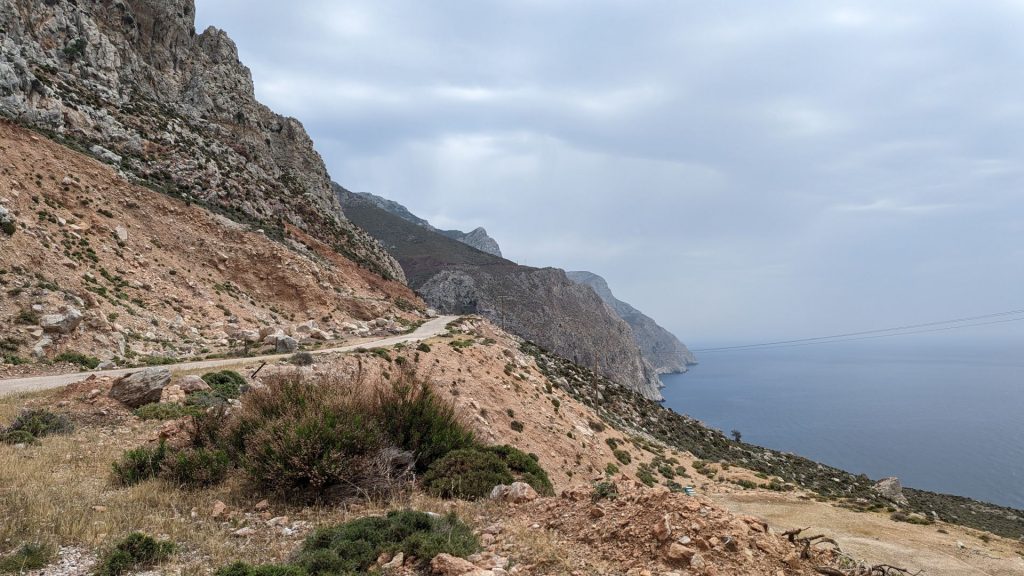
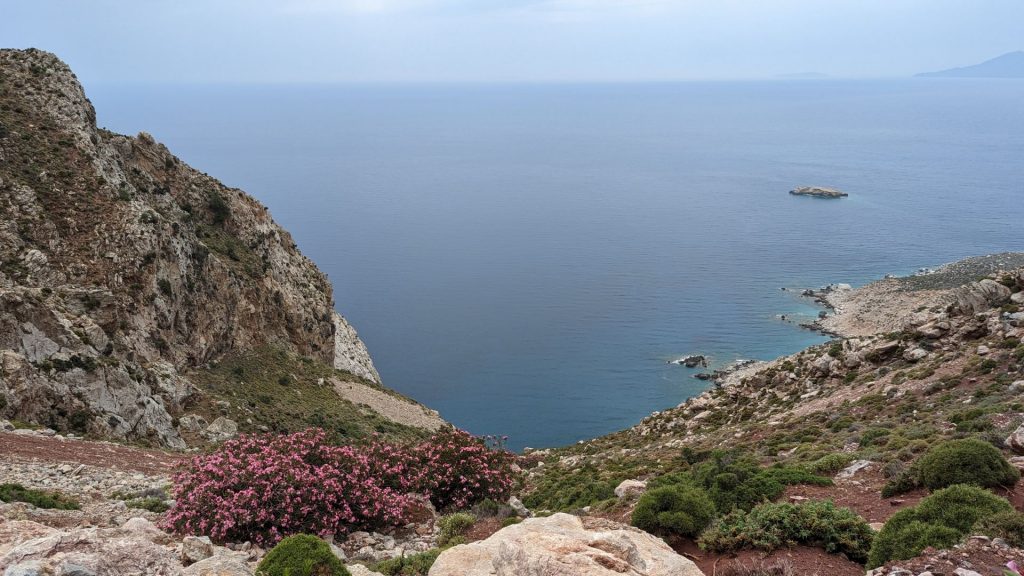
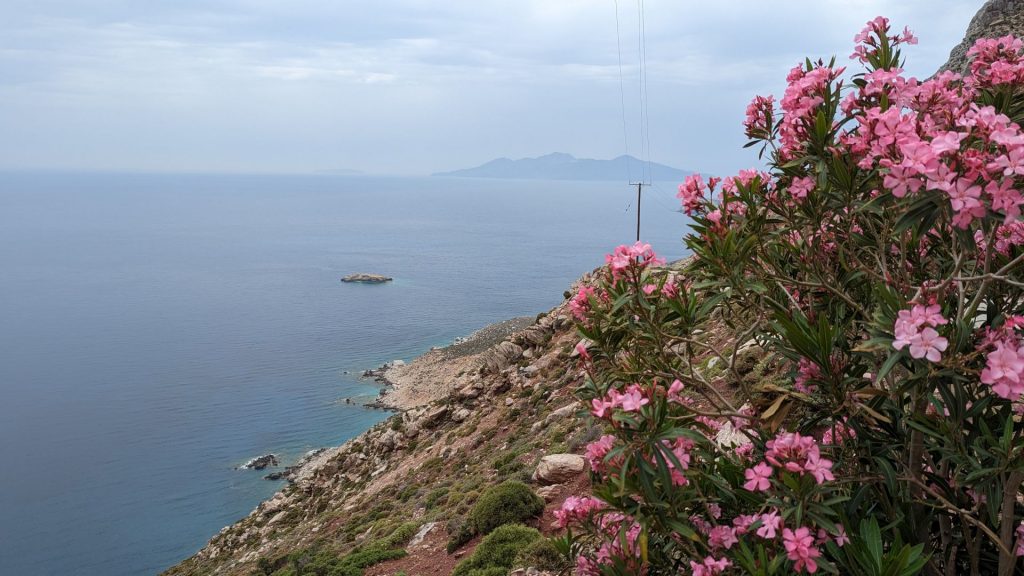
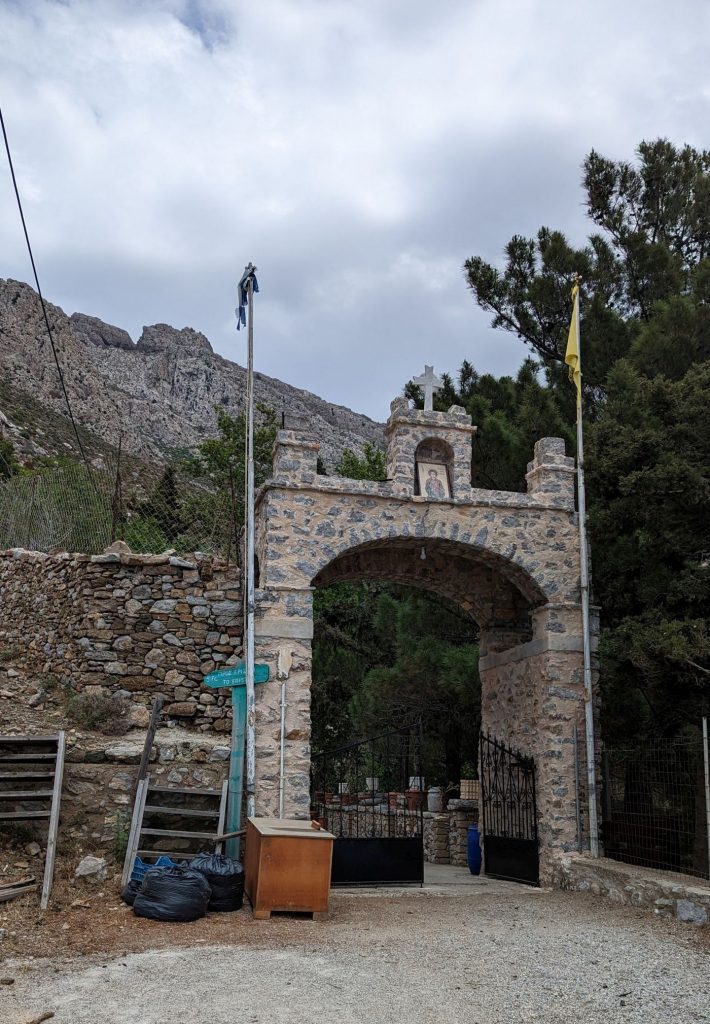
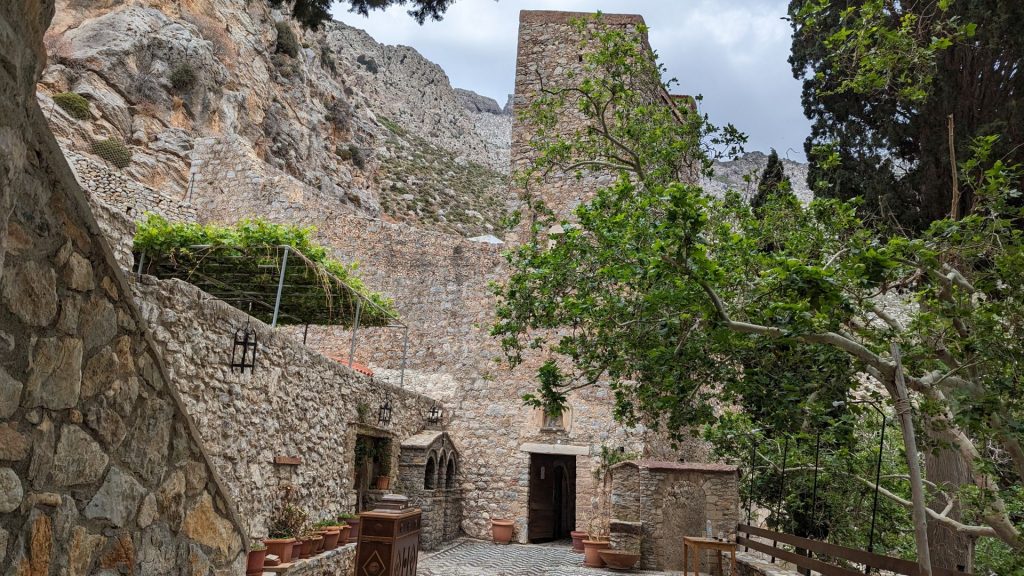
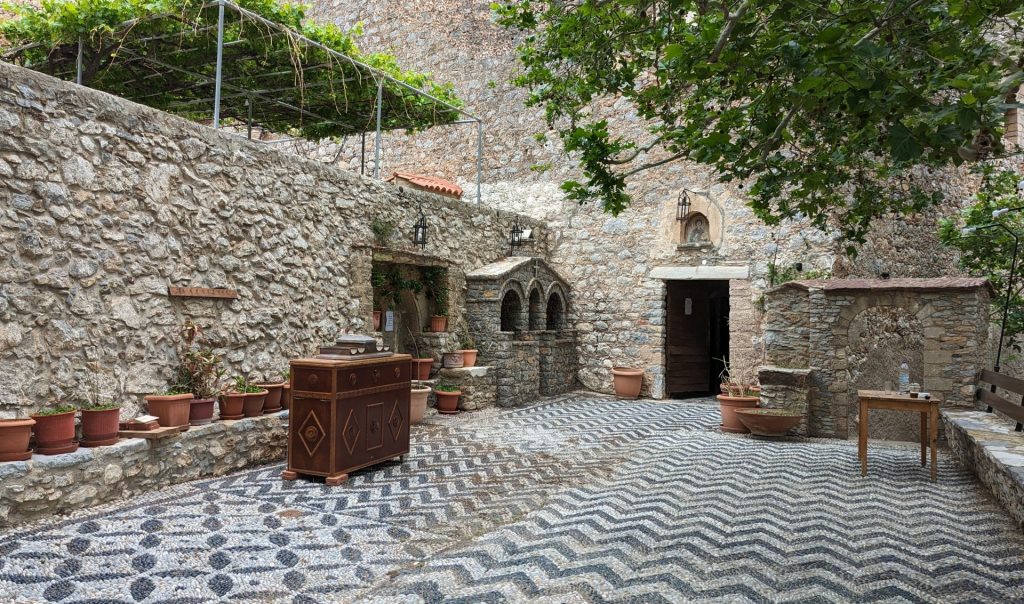
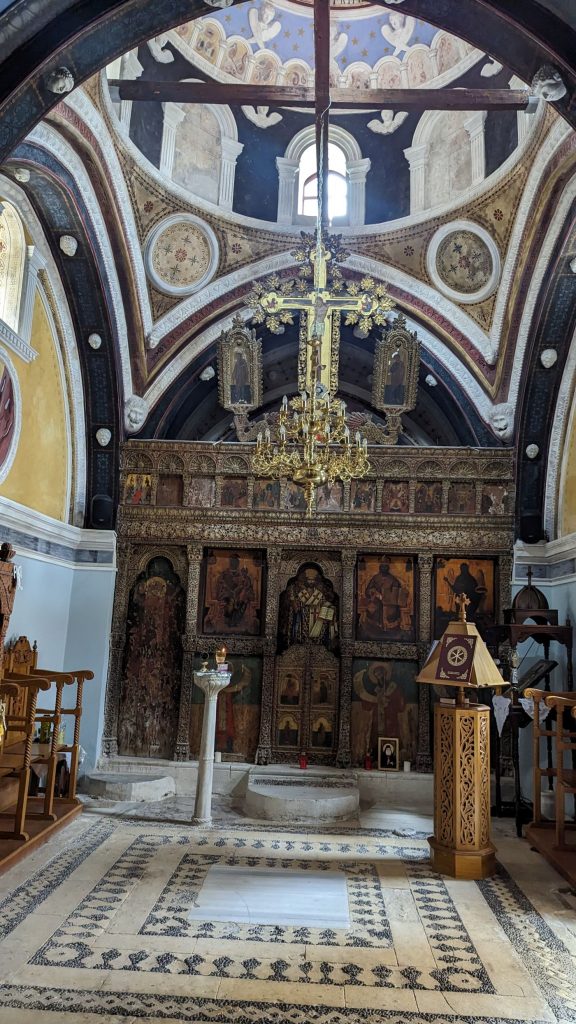
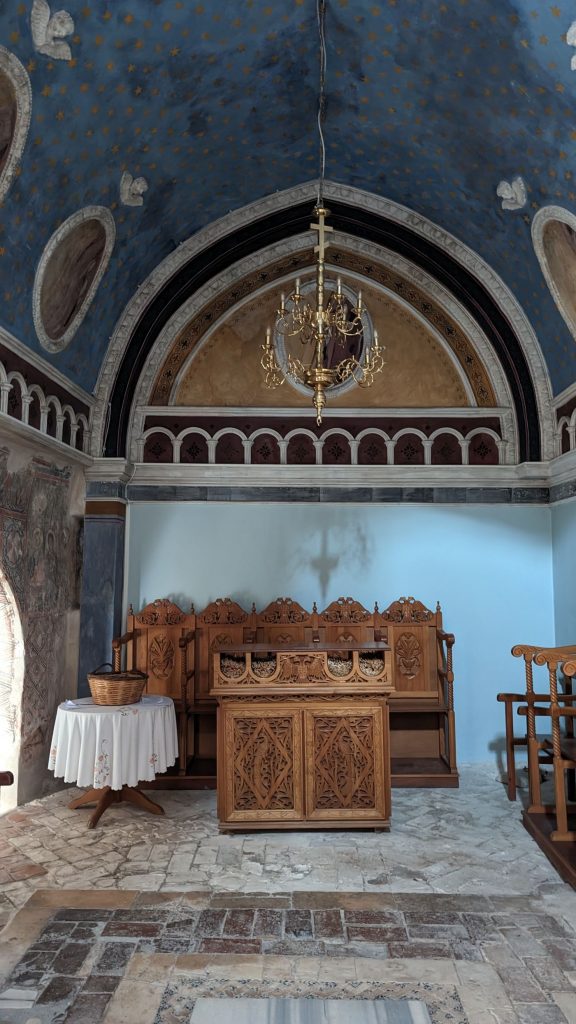
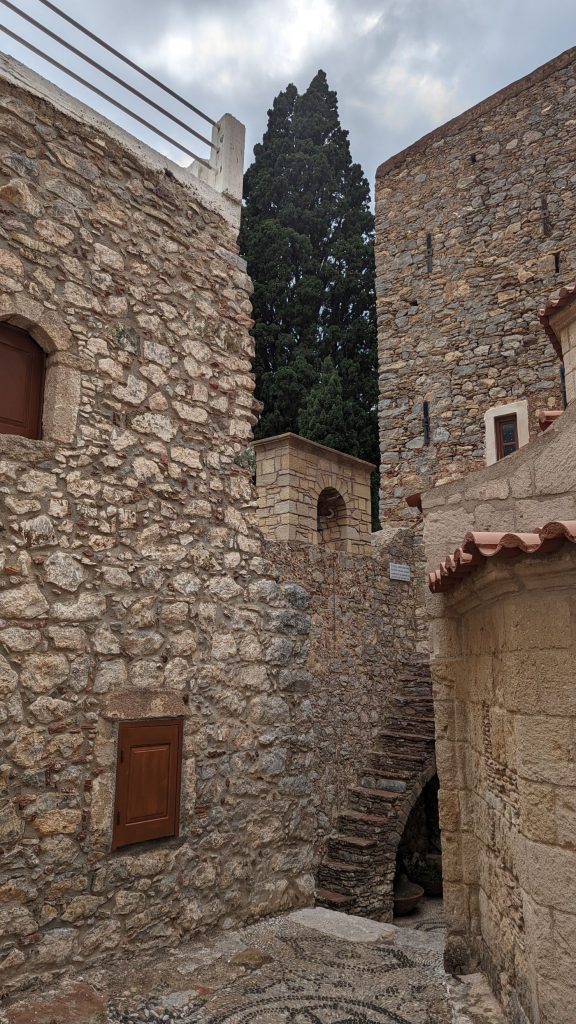
There is a serenity to the monastery. I felt close to God.
Our next stop was a short one: Plaka beach. It is a pebble beach. We read that we should watch for the peacocks. Sure enough, we saw one.
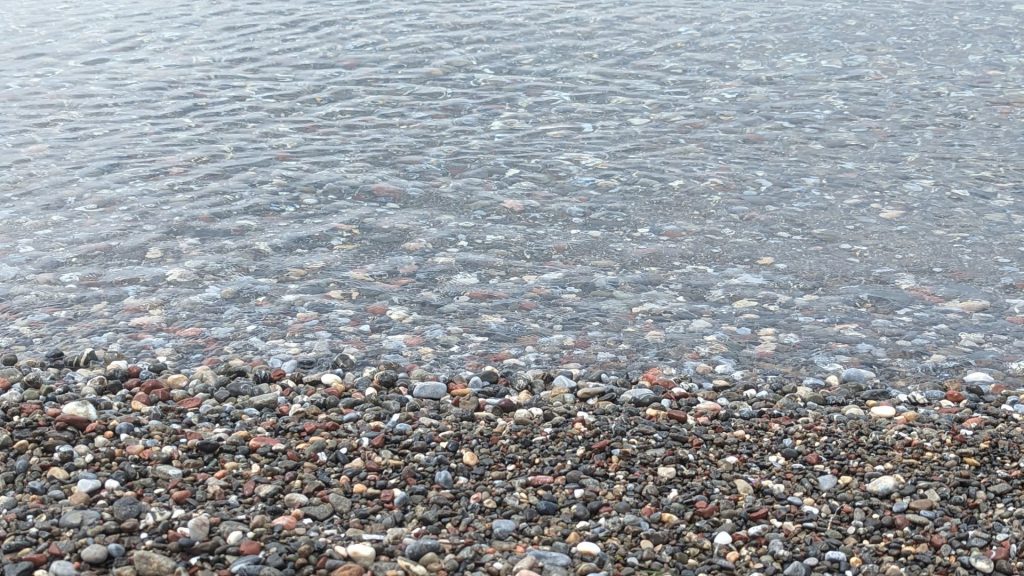
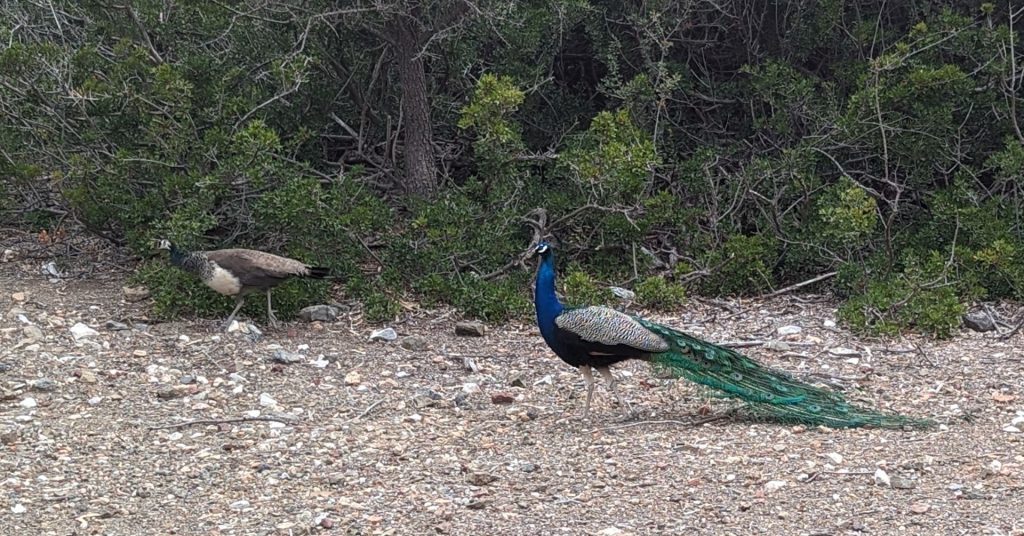
Here are some nighttime pictures of the harbor where we stayed. It was so peaceful.
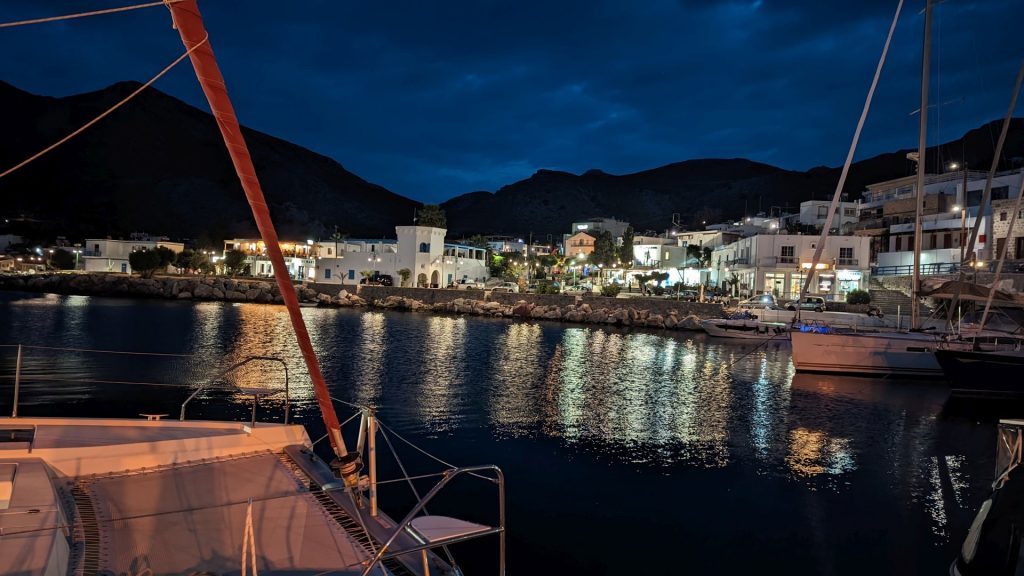
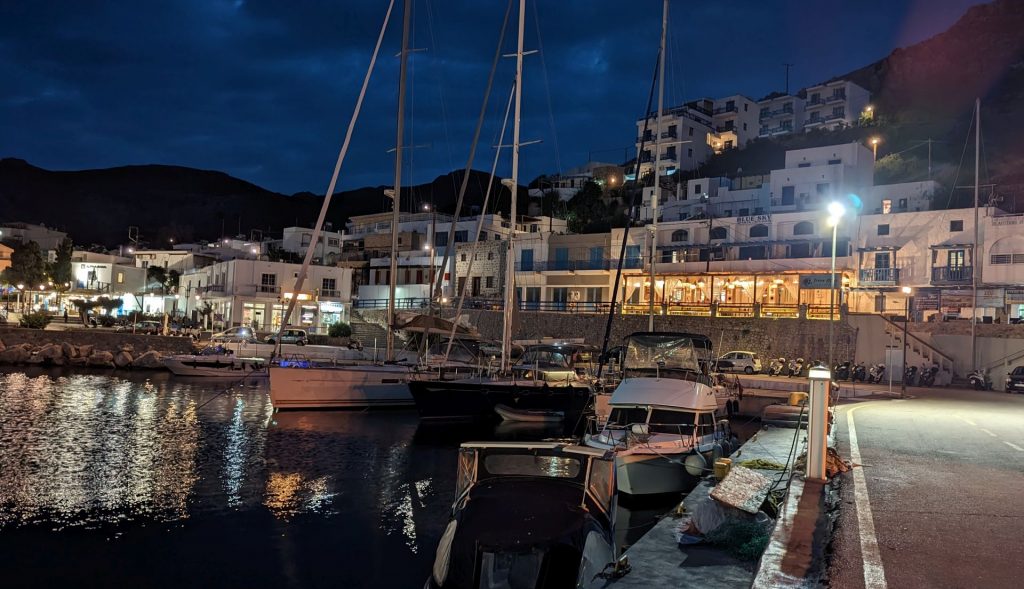
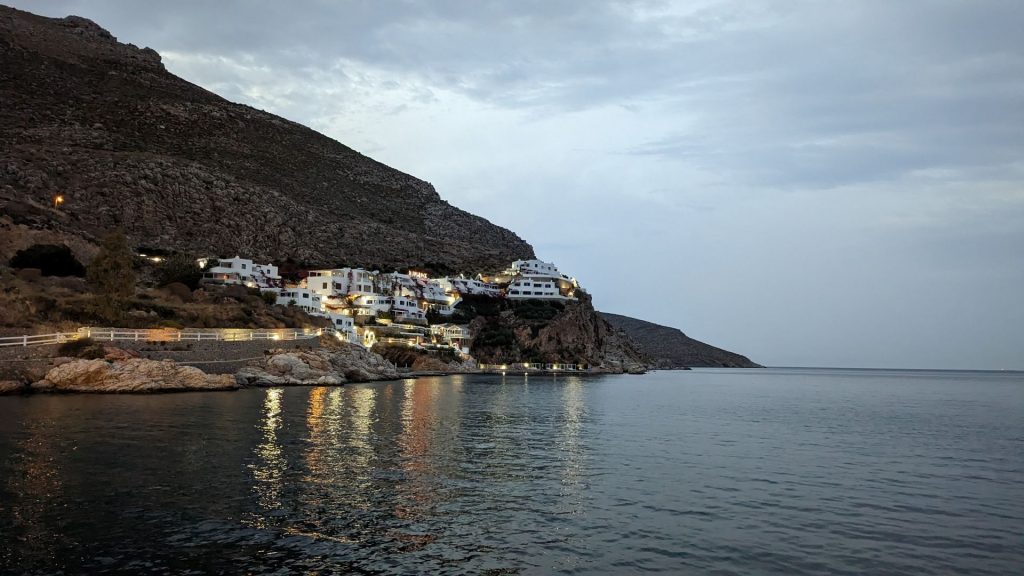
Time to go to Nisyros!
But, wait! Before we leave for Nisyros, let’s take a moment to applaud this man (leaving Tilos) who has a real live tree on his boat!
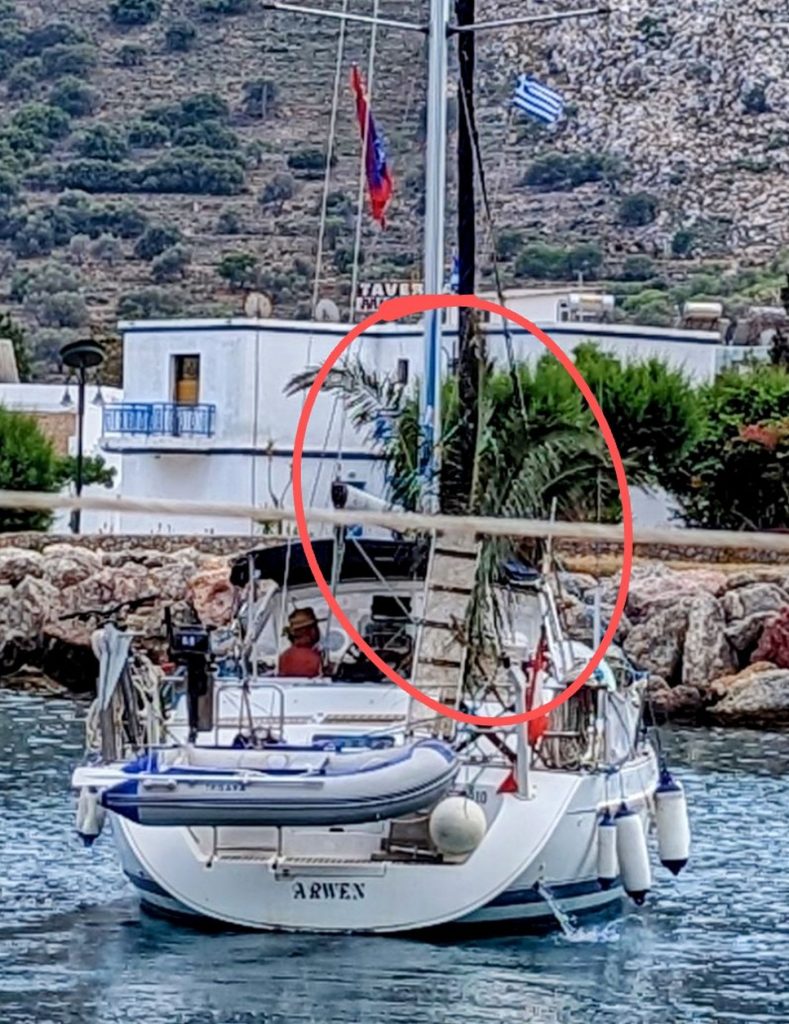
Okay, now we can leave for Nisyros.
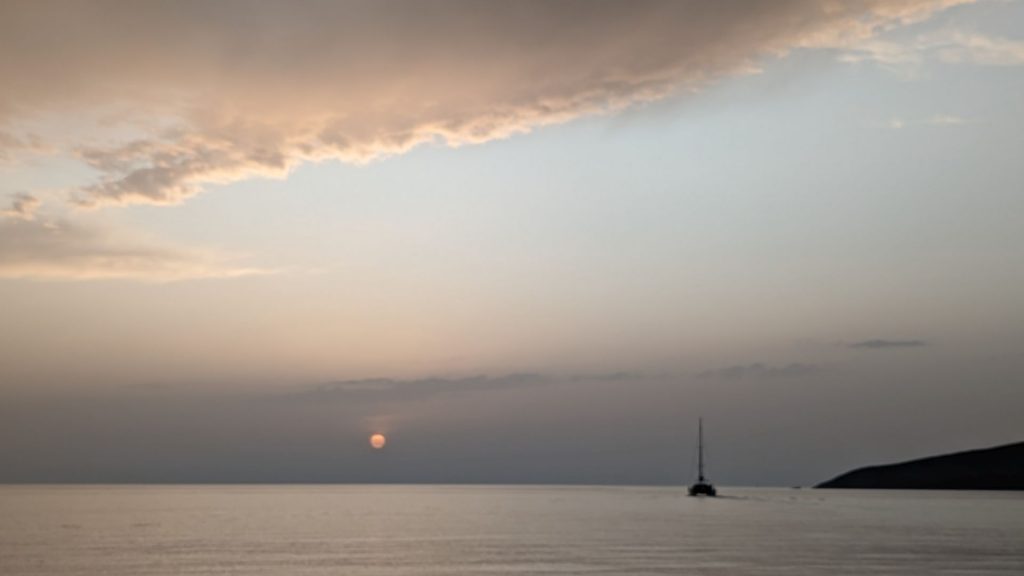
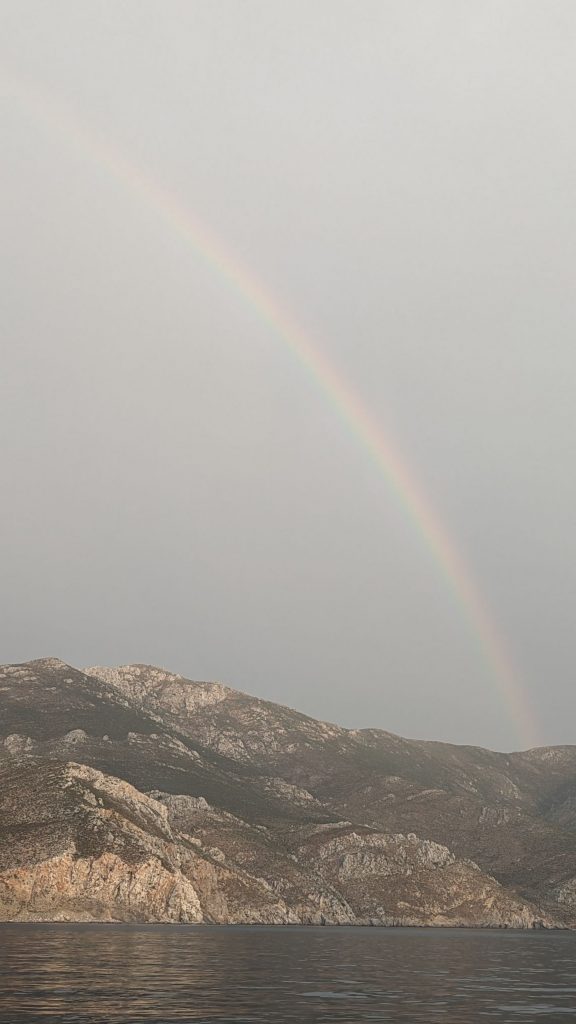
Nisyros is most well-known for its active volcano that has one of the world’s largest hydrothermal craters. The volcano has been ‘dozing’ for 130 years. Researchers monitor its daily coughs and grumbles closely. Nisyros’s volcano is one of the few anywhere in the world that can be easily visited. (This is why I am happy that researchers are monitoring it daily.) The craters are named Stefanos, Polyvotis, and Alexandros. (The fact that they have names tickles my fancy.) We stayed at Pali marina at the northern tip of the island.
Let’s get to the pictures!
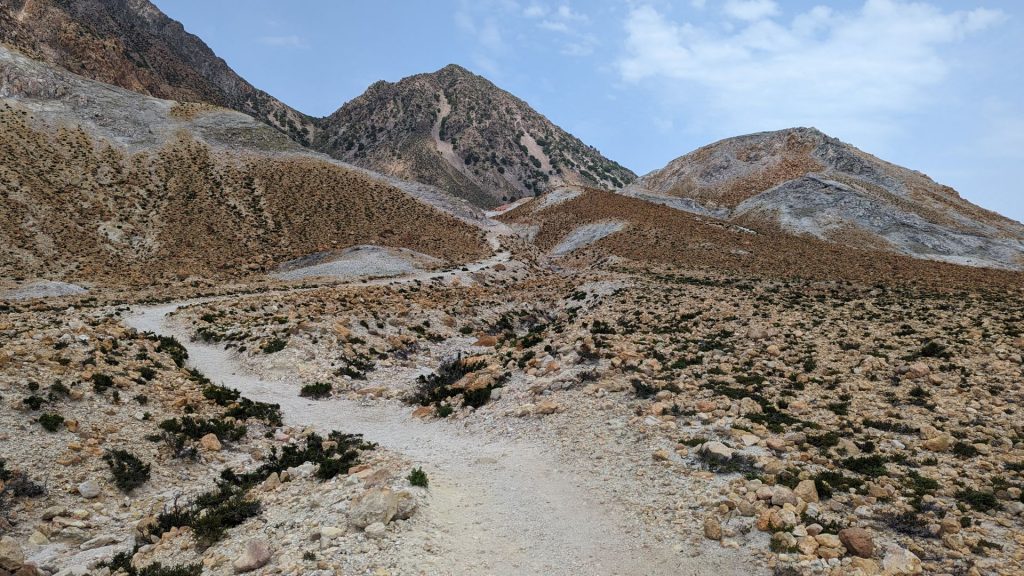
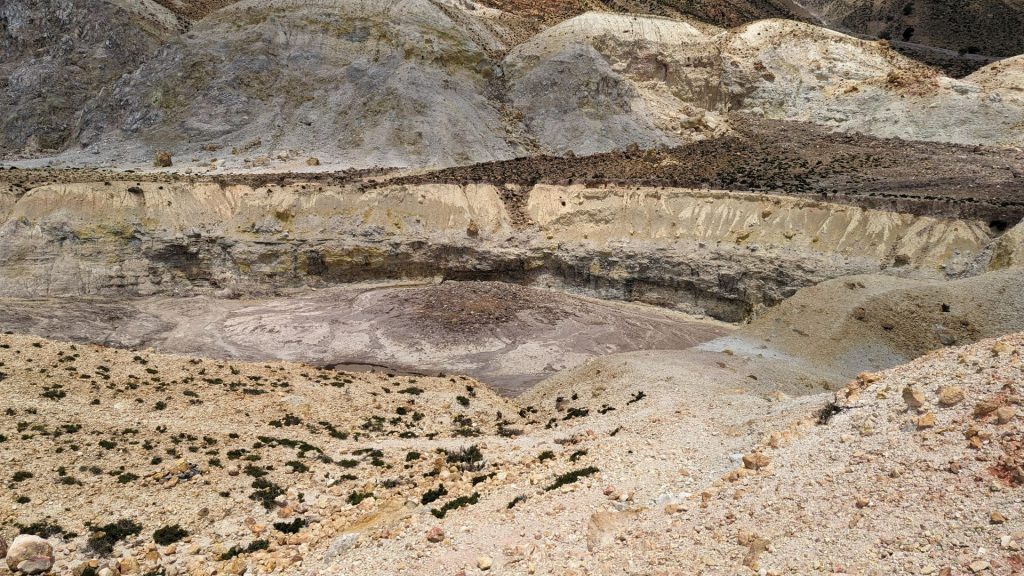
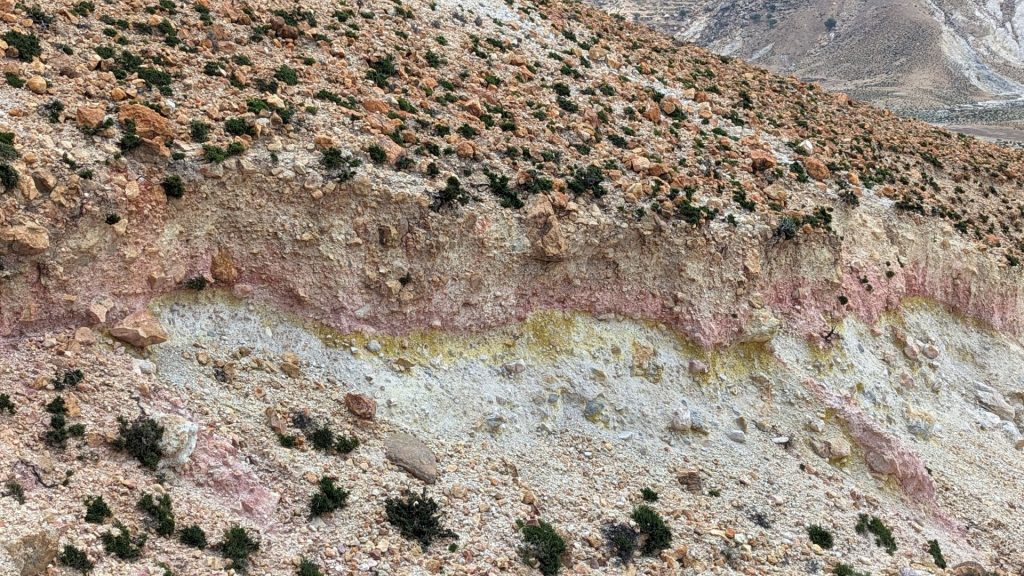
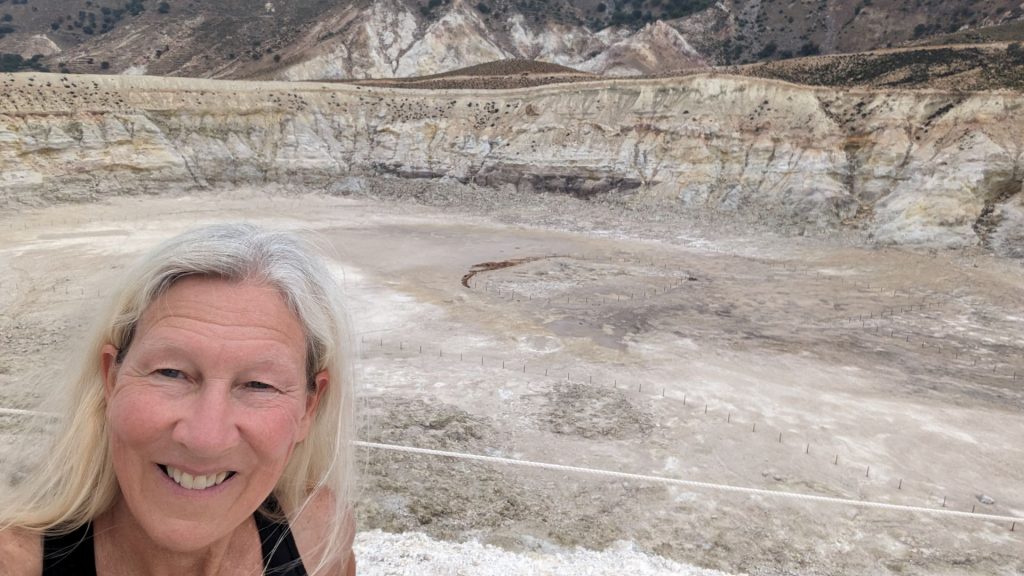
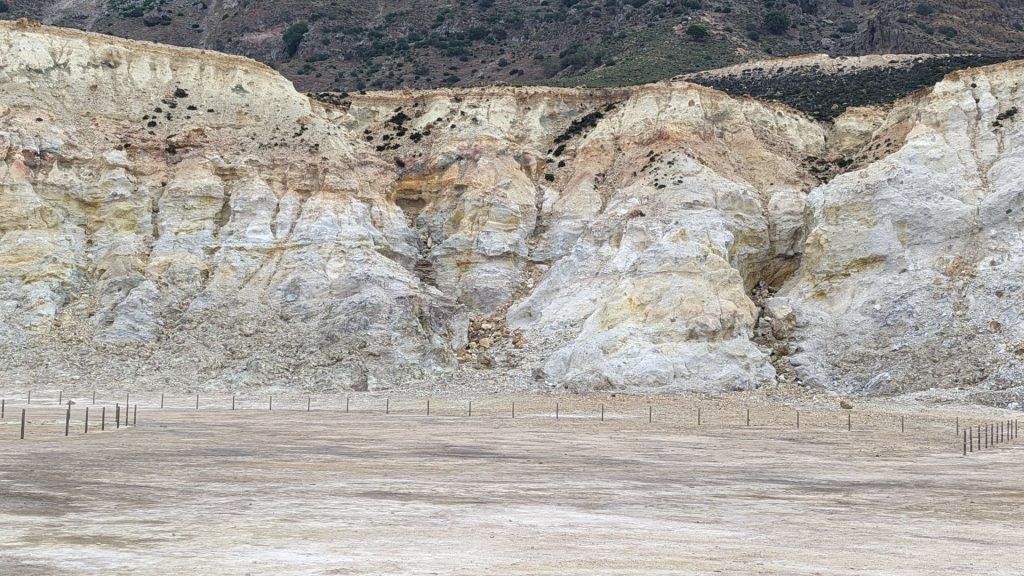
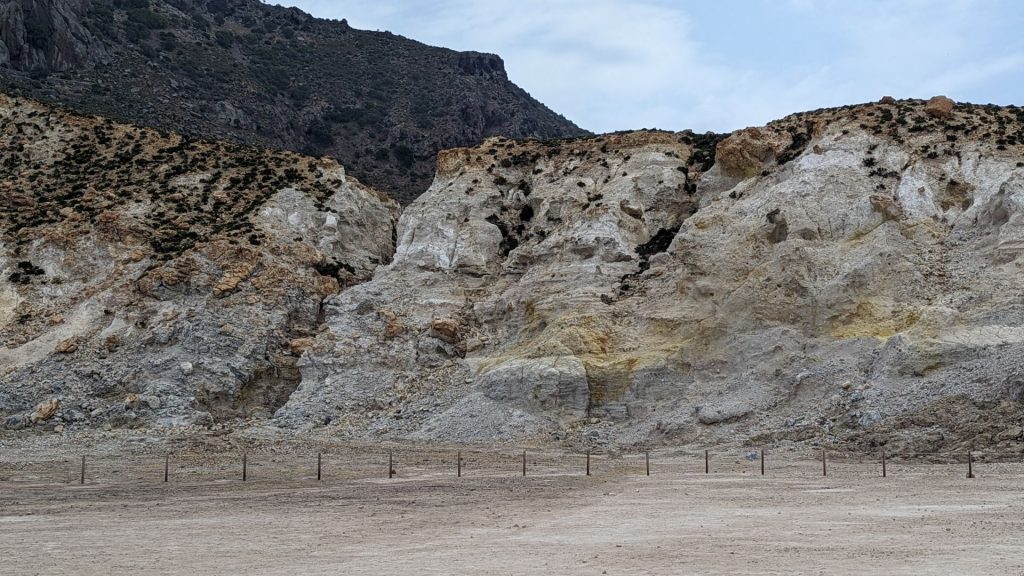
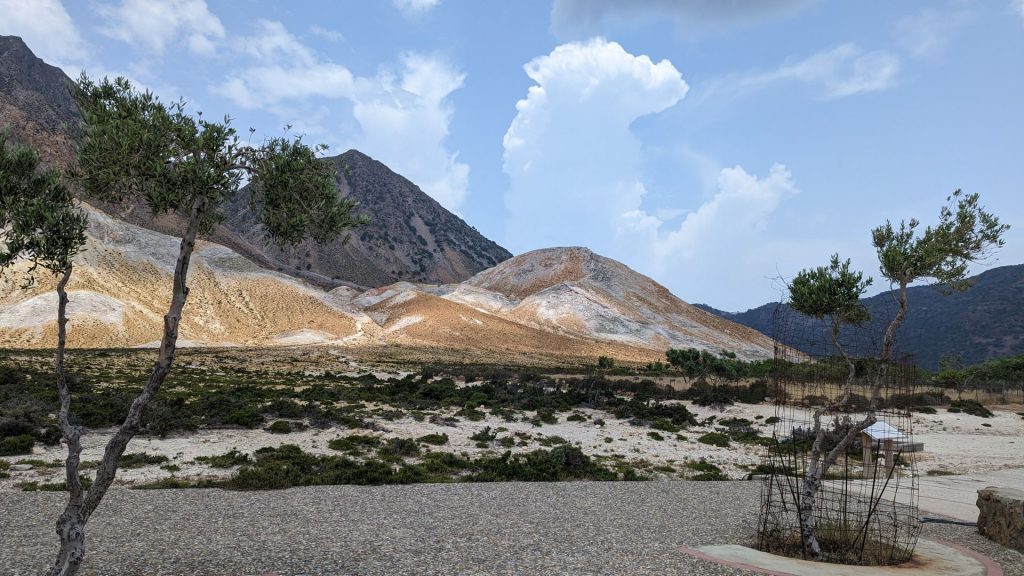
It was time to head to a small village. We had a beer and a snack, then I had a look around (not all of the streets were wheelchair friendly) then we headed back to Seahike.
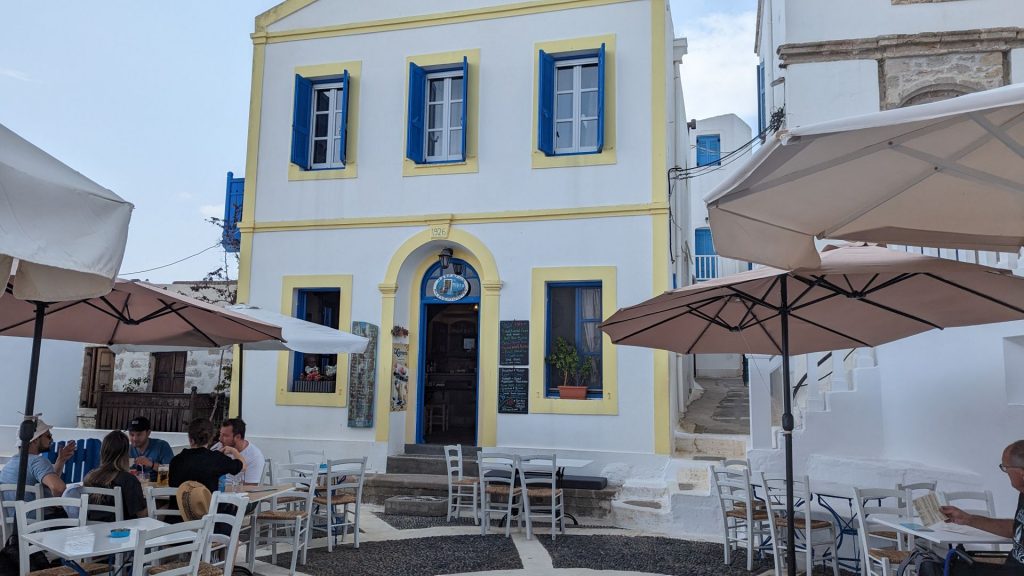
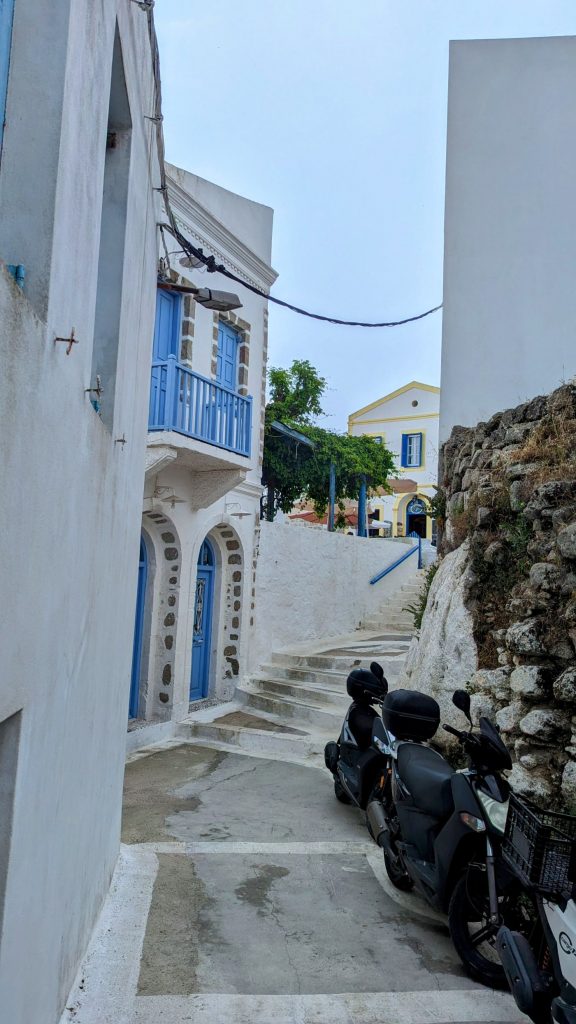
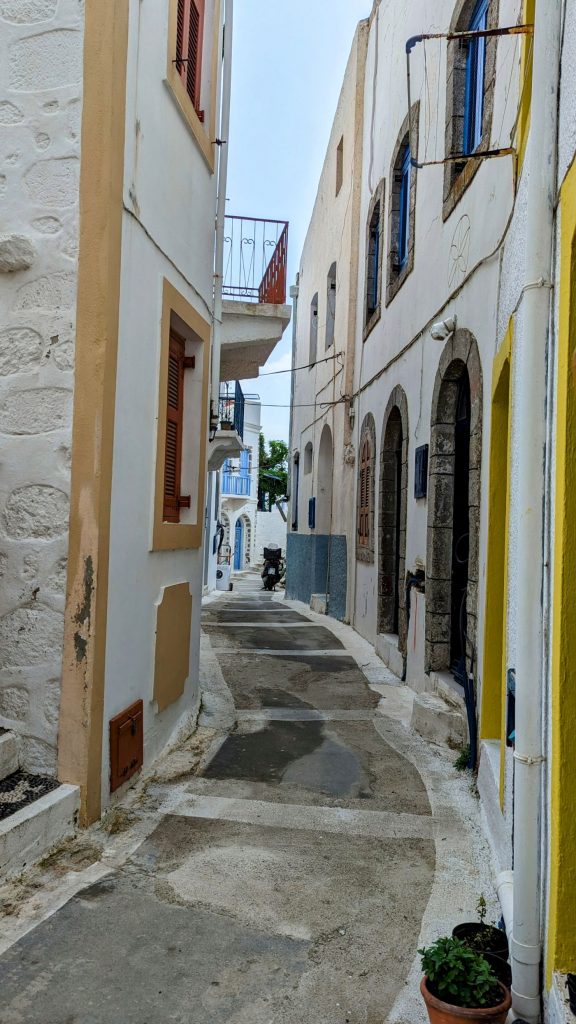
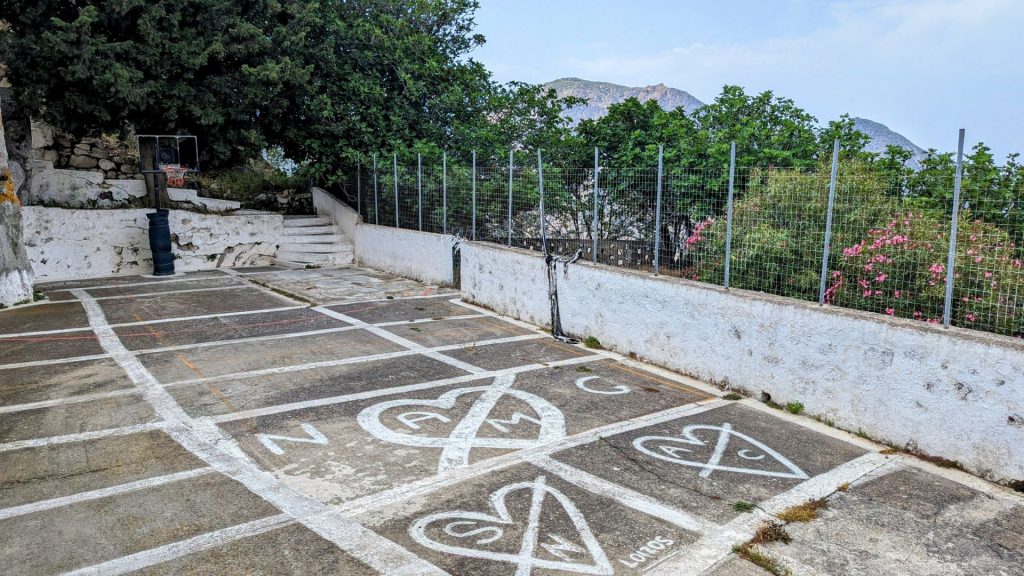
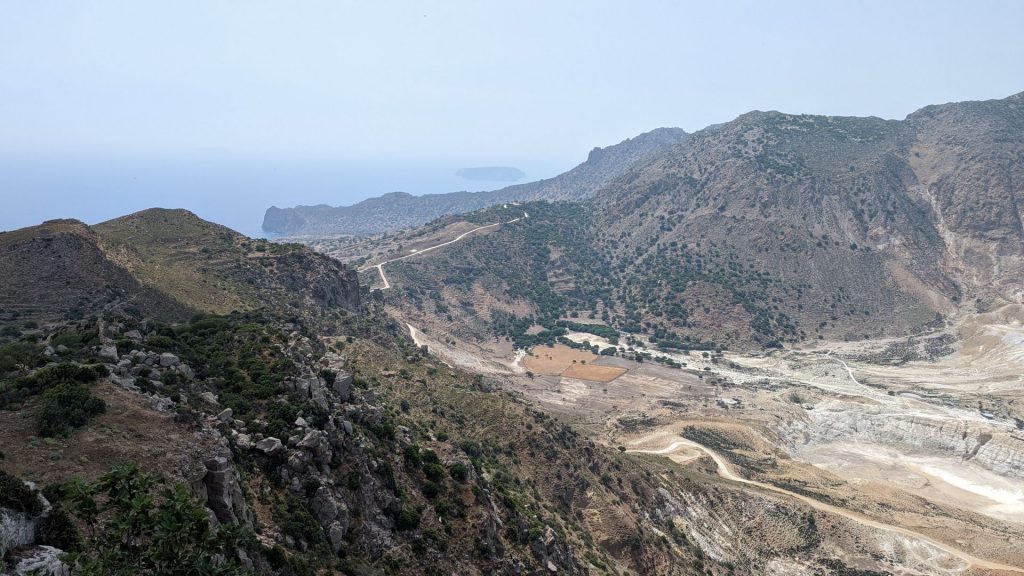
Other scenes from Nisyros:
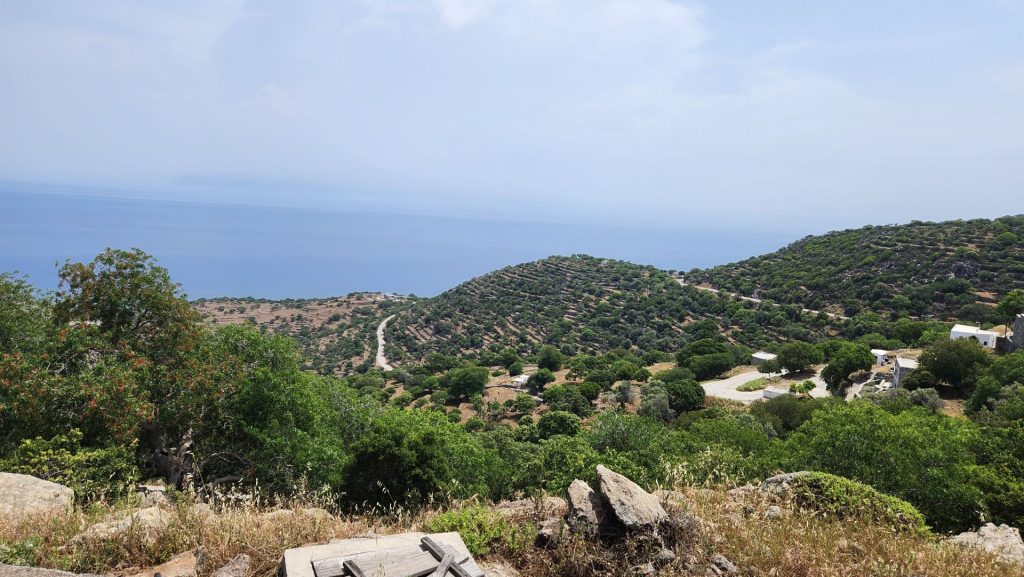
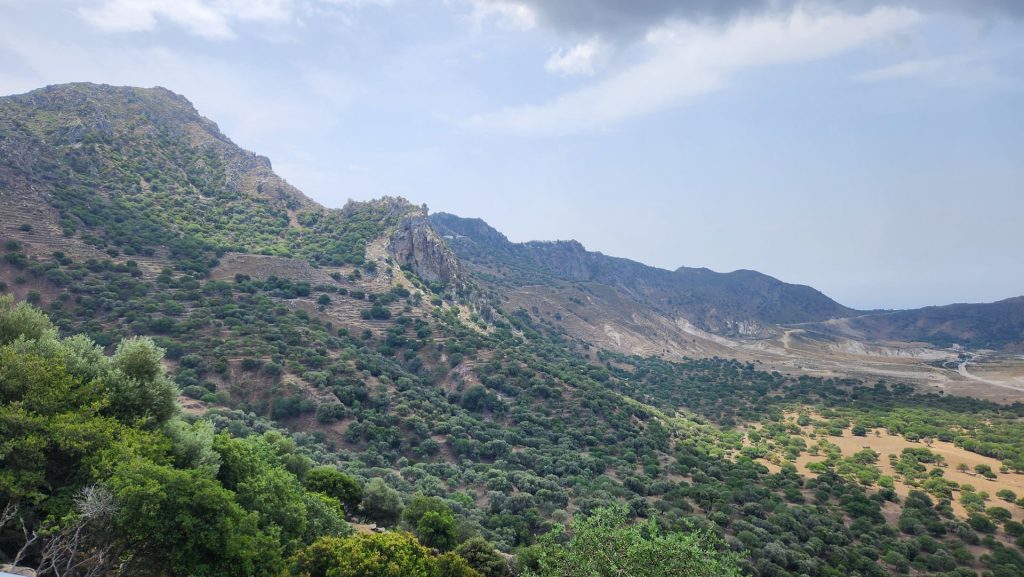
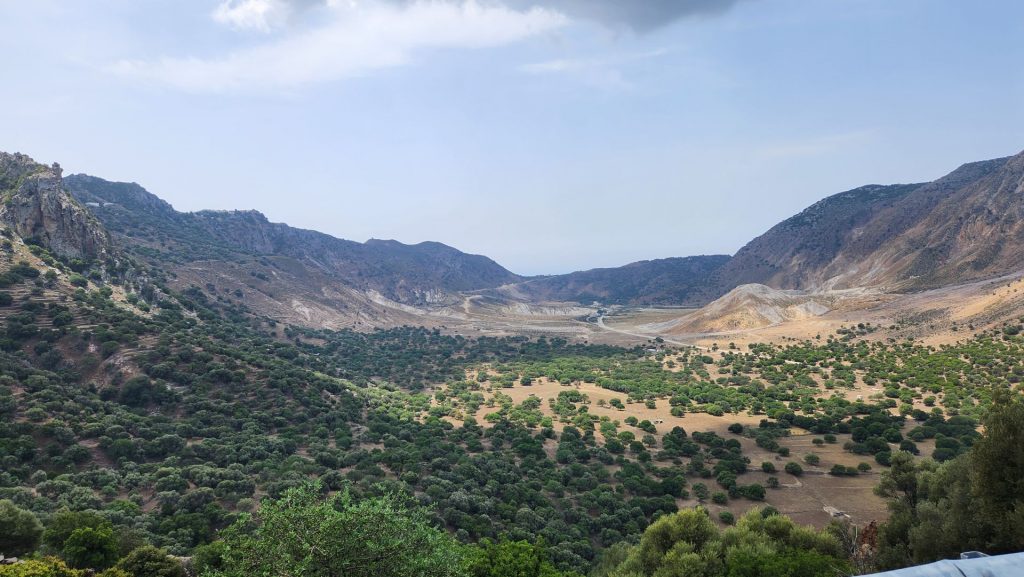
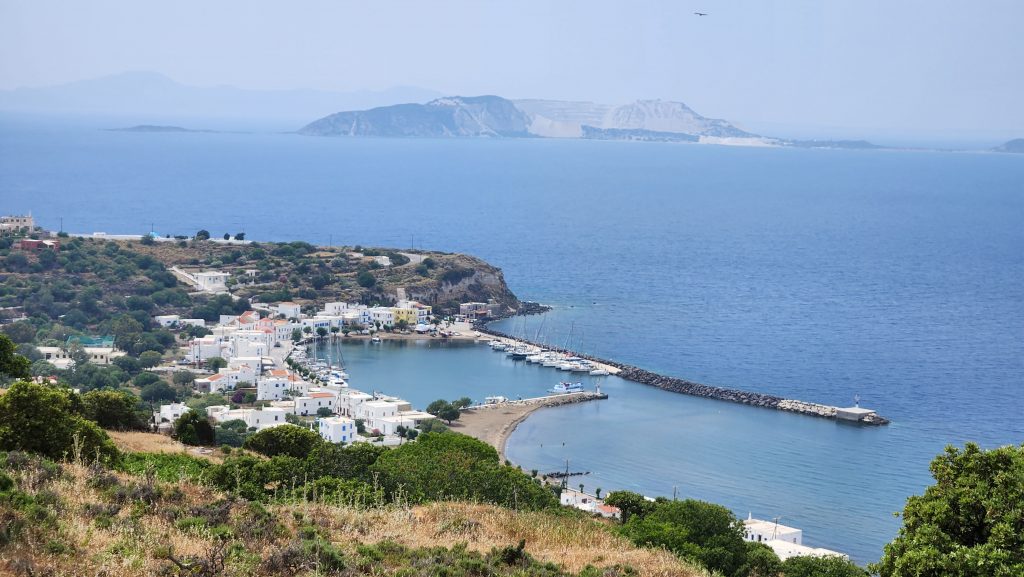
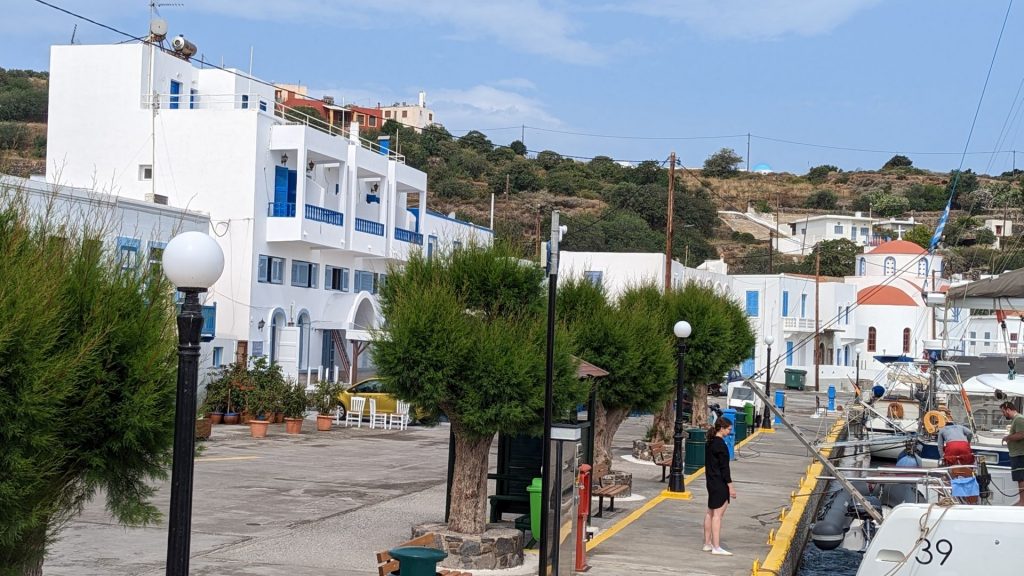
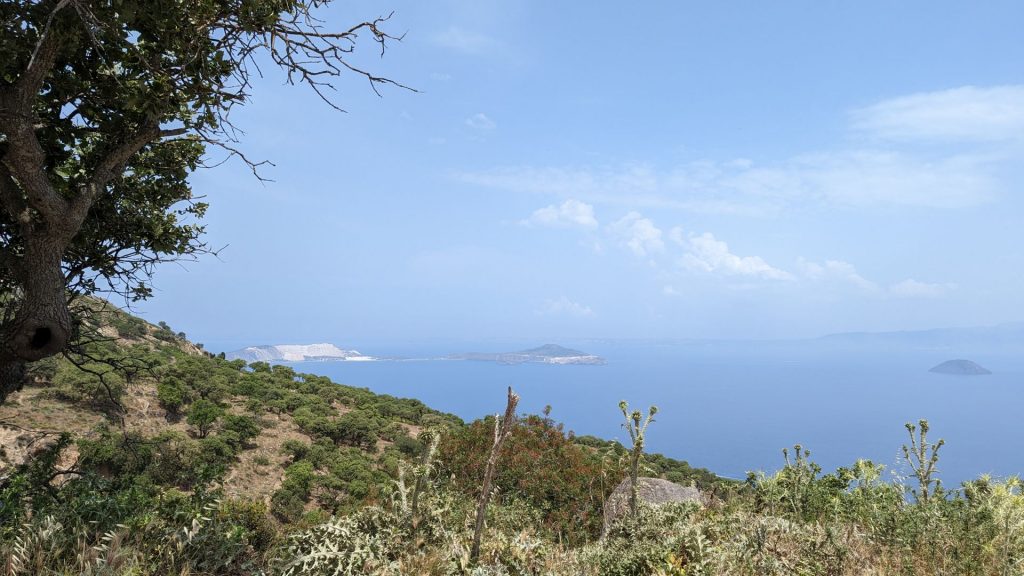
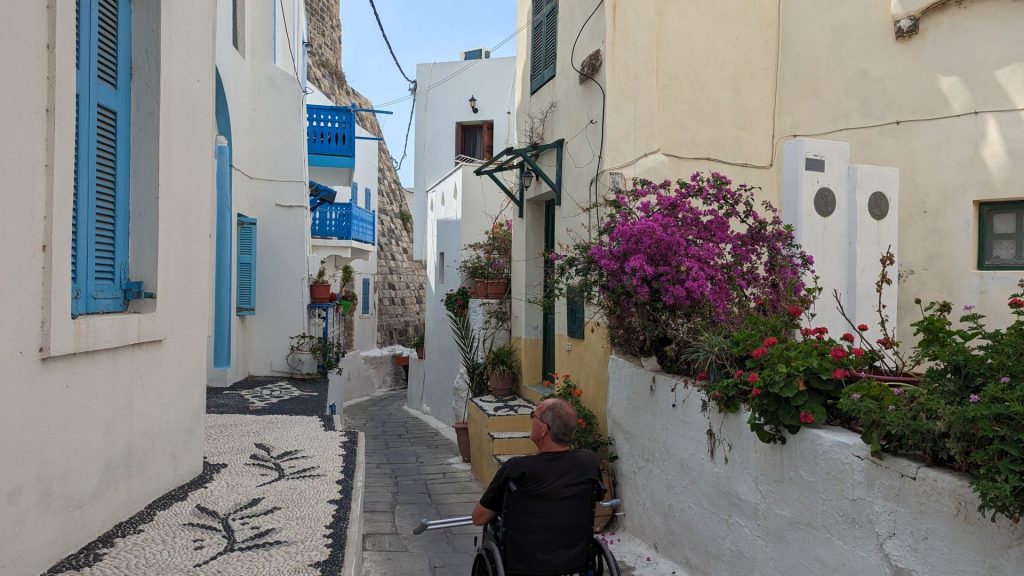
We ended our travel day with a bite and a beer at a lovely spot near the sea.
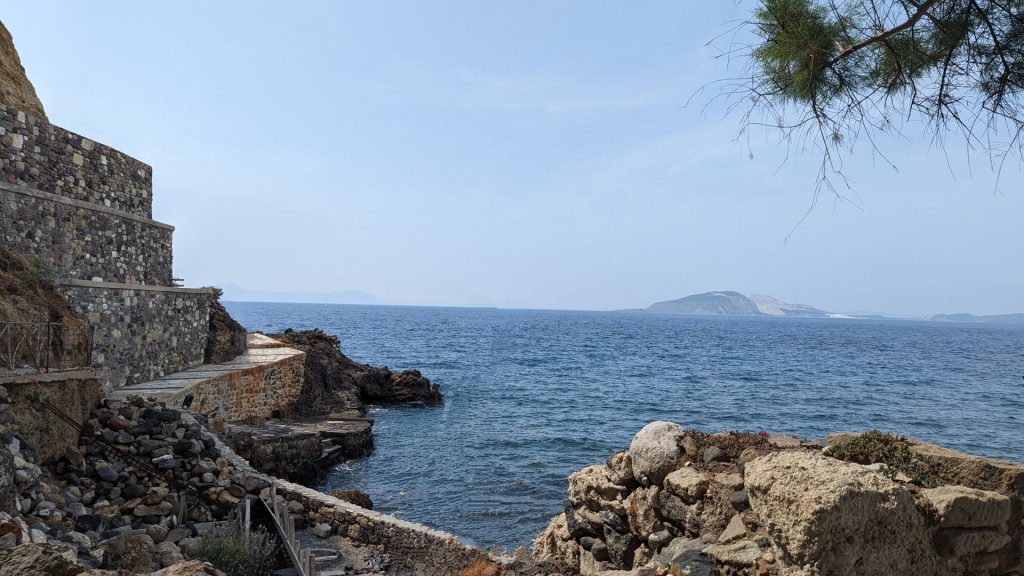
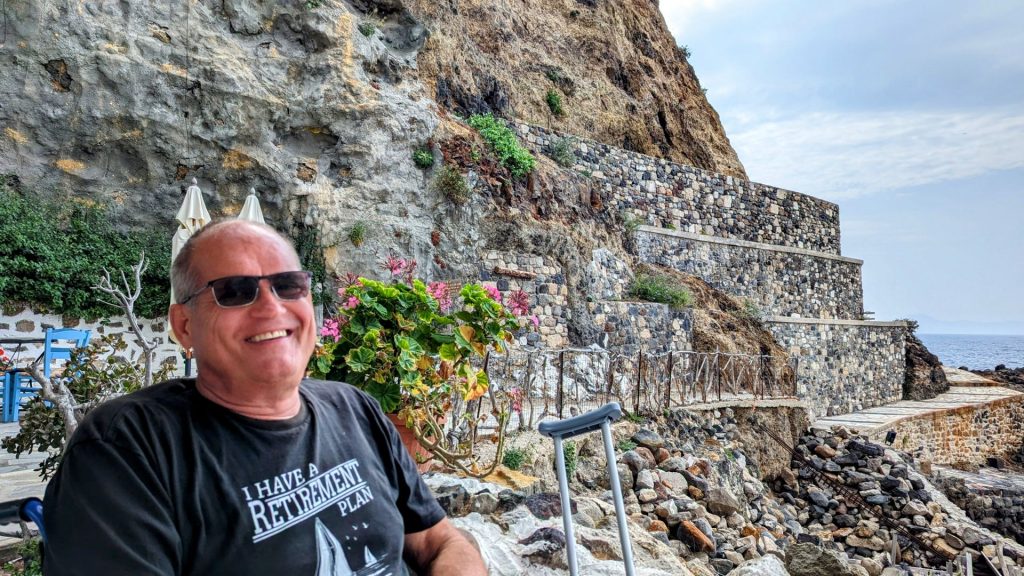
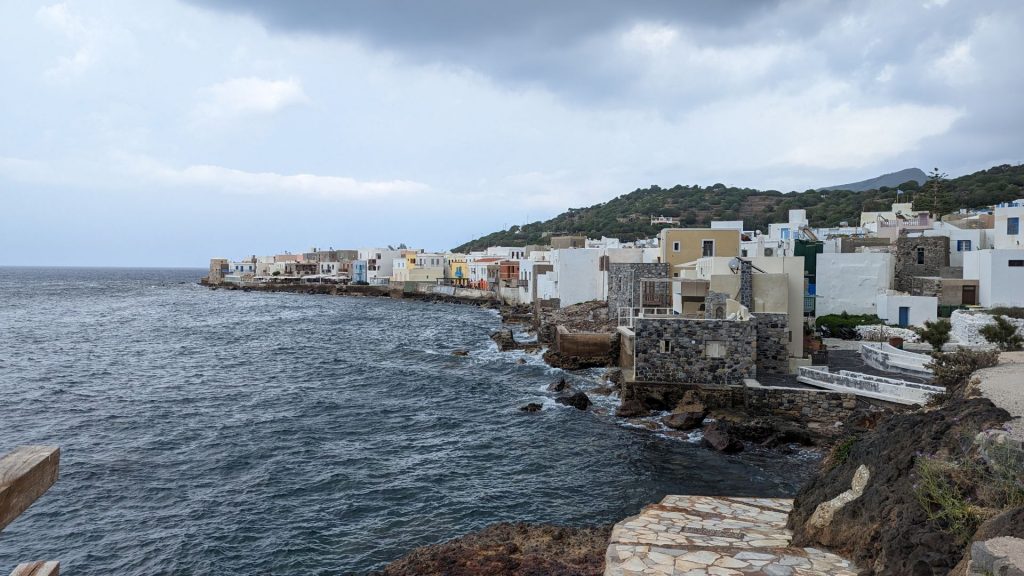
We amended our plans after visiting Nisyros. We had planned to go to Milos, but the winds several days out dissuaded us. We decided to go to Astypalea instead. Although I think we would have really enjoyed Milos, we always knew that the wind would dictate our path in the end. Life on a sailboat consists largely of compromising and accepting change . . . oh, and fixing stuff that breaks. (Not a bad life lesson, actually.) So, off we went to Astypalea! (For those keeping track, We went to Astypalea on May 29.)
Leaving Nisyros:
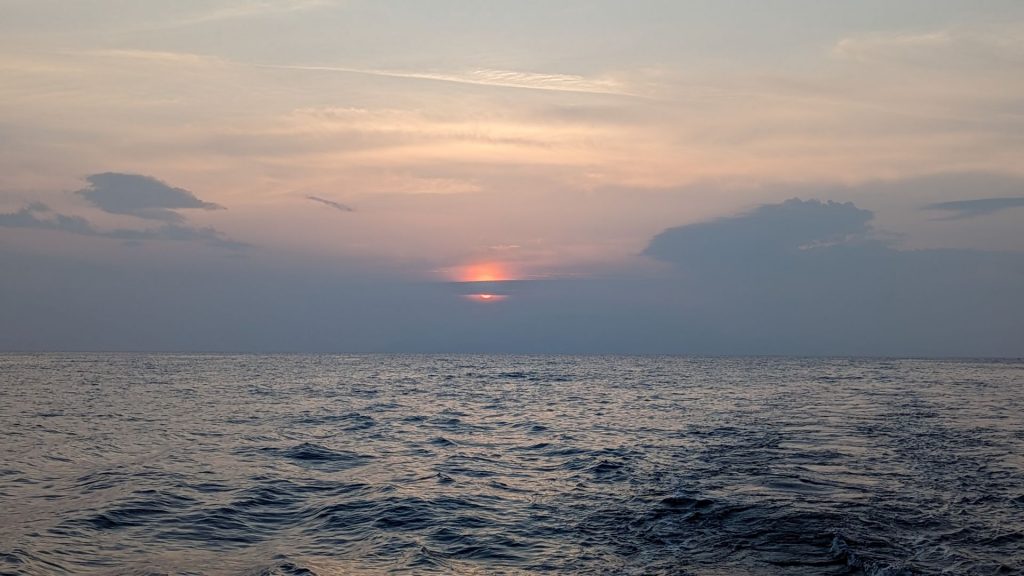
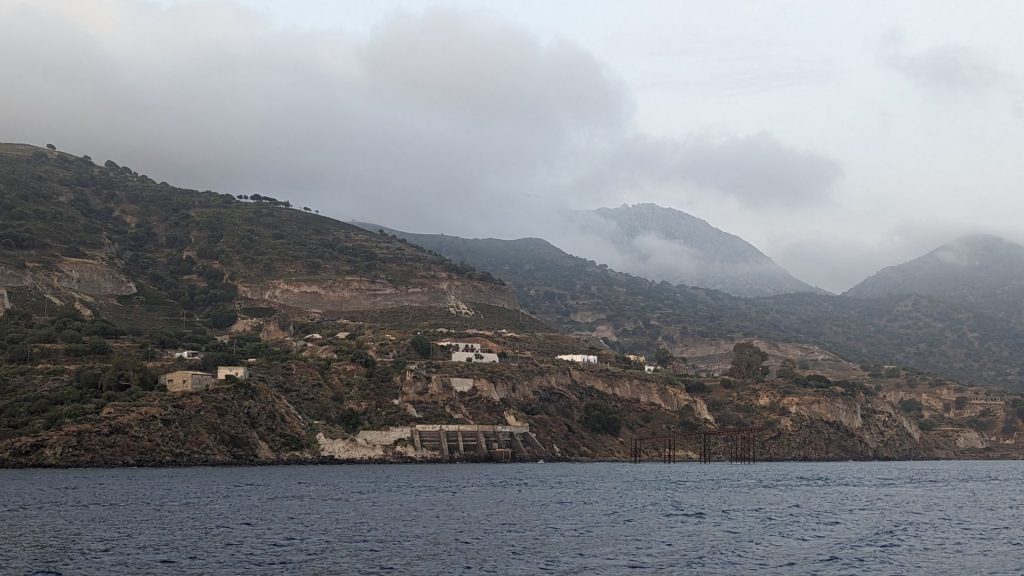
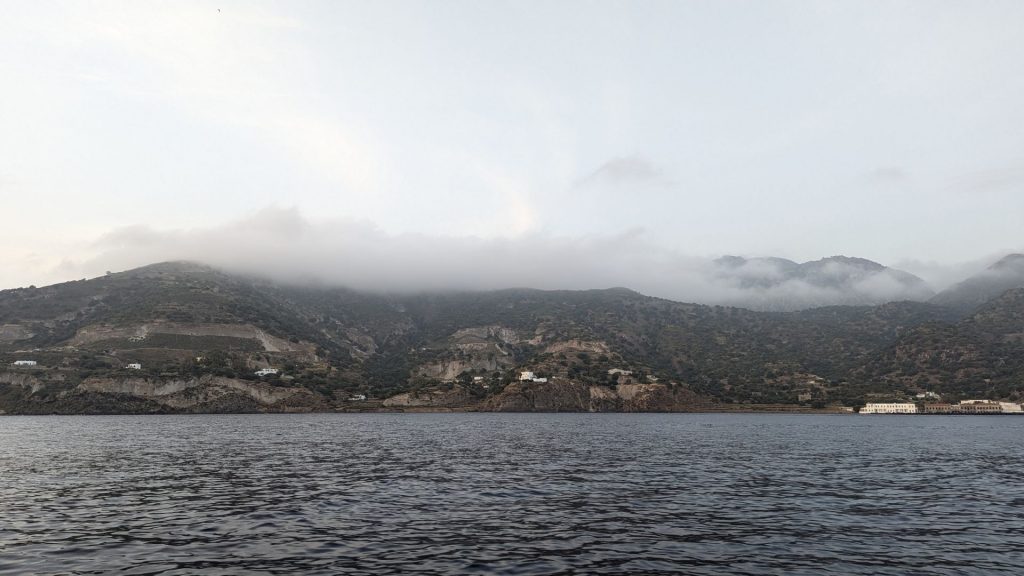
Our time in Astypalaia consisted largely of taking a scenic drive and eating a good meal. Hard to beat that combination! Here are some pictures from the scenic drive.
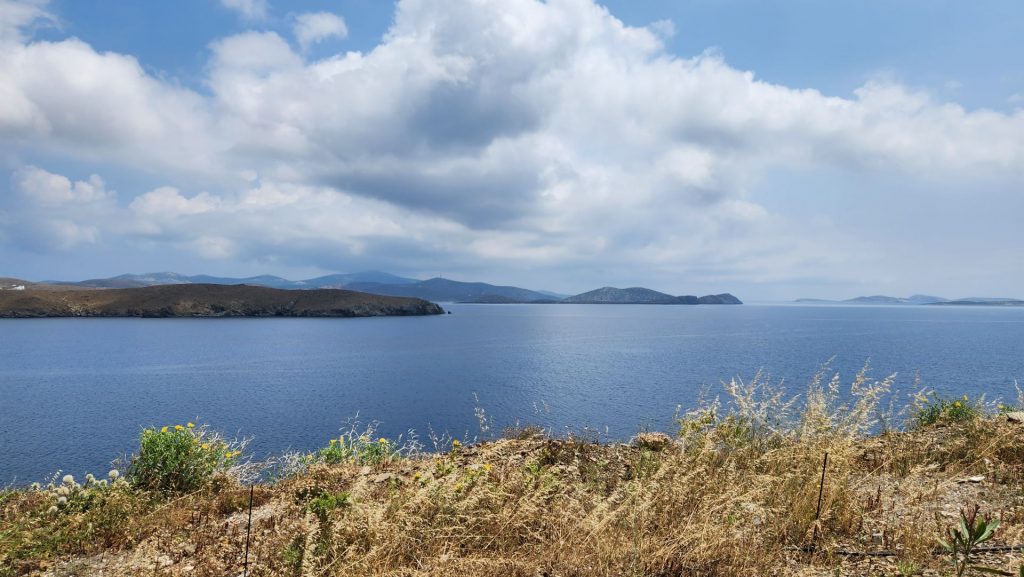
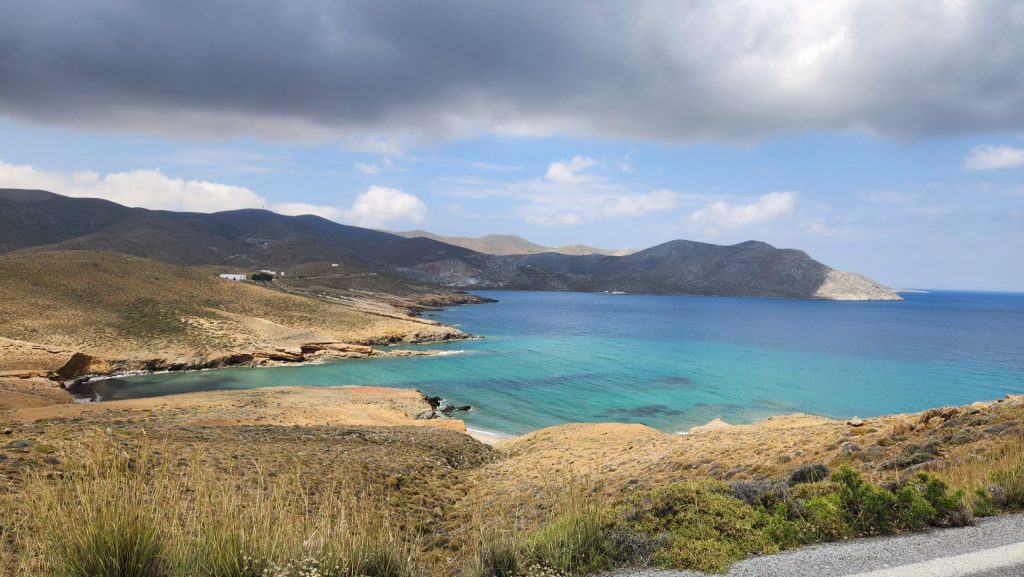
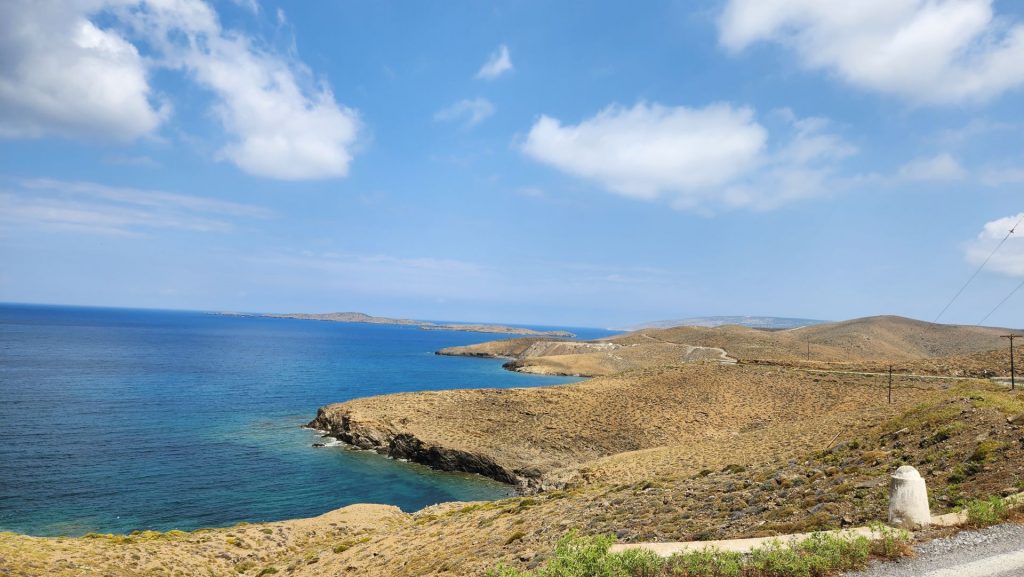
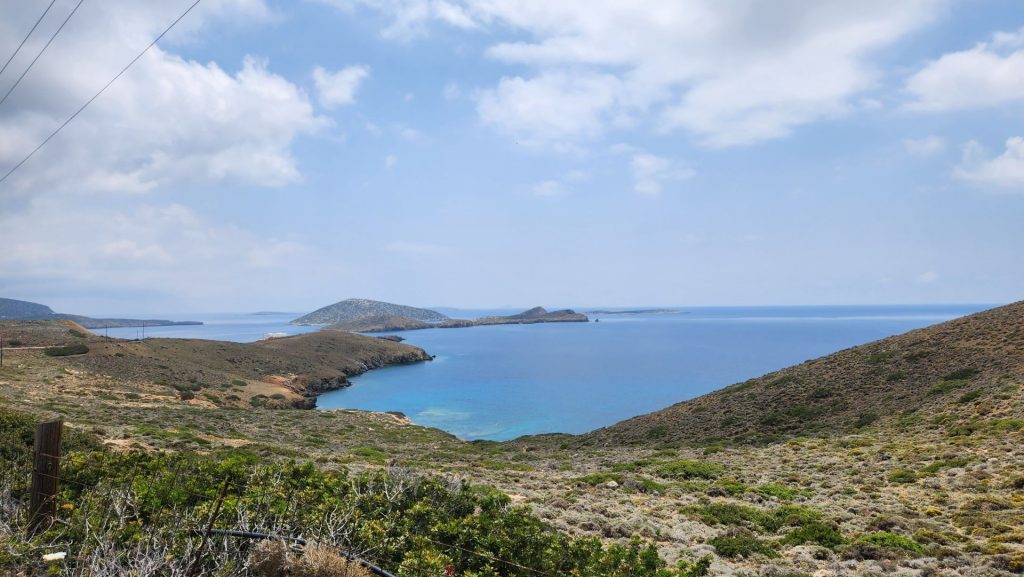
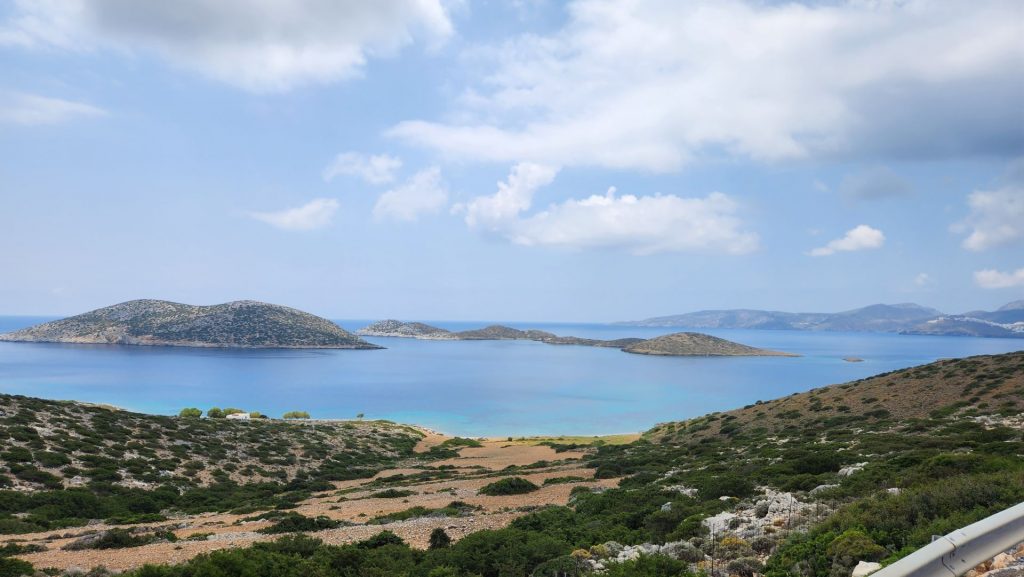
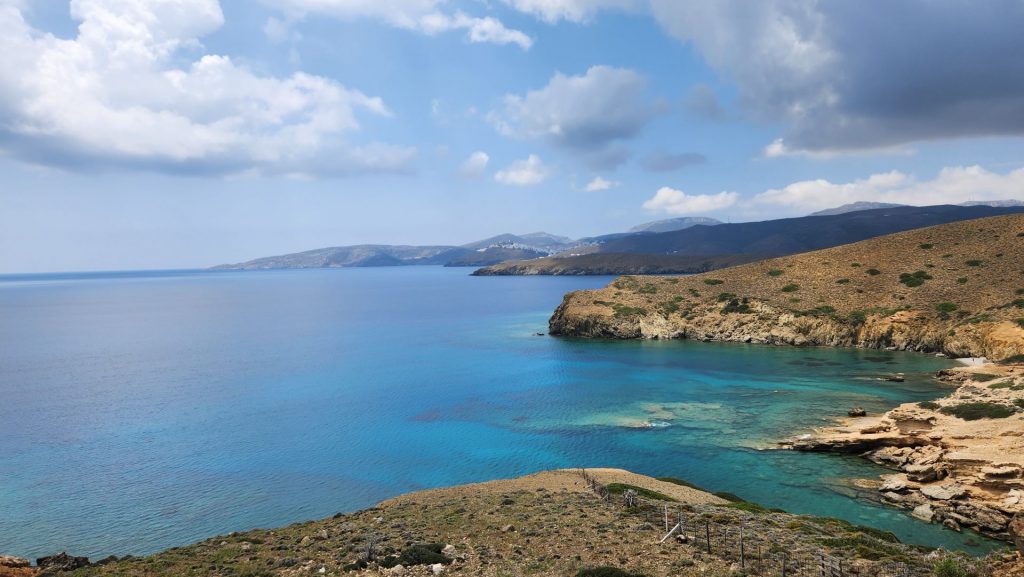
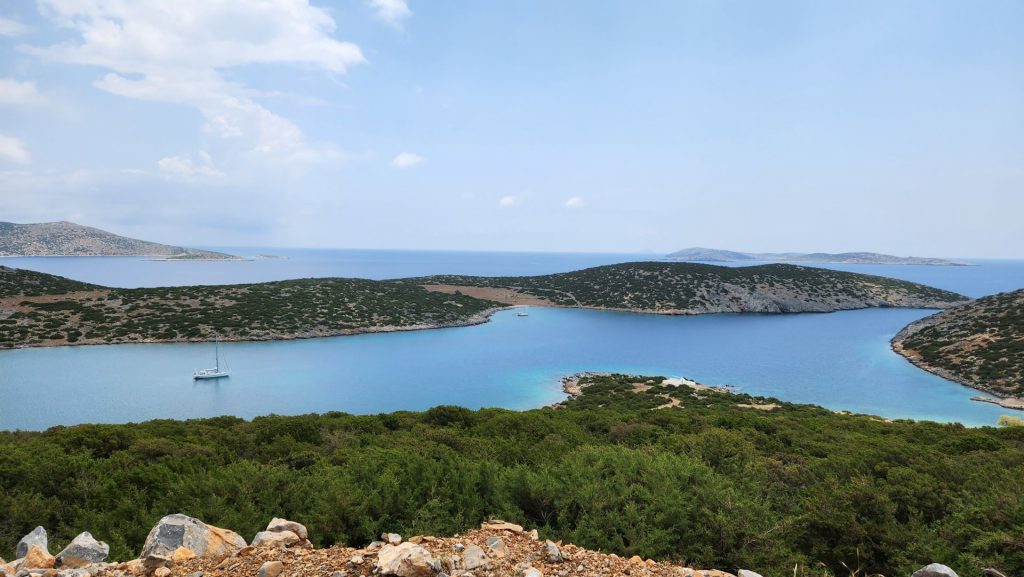
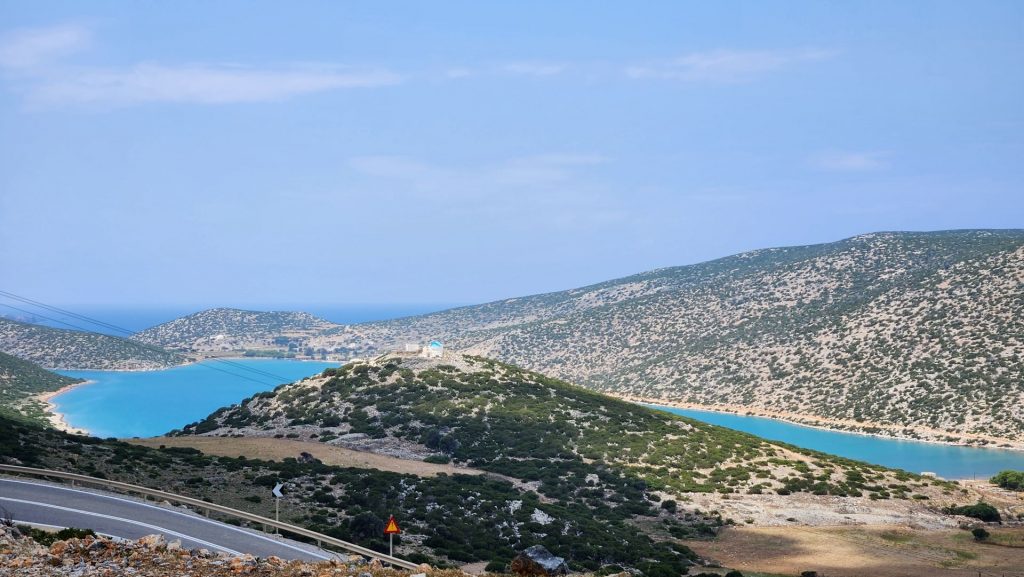
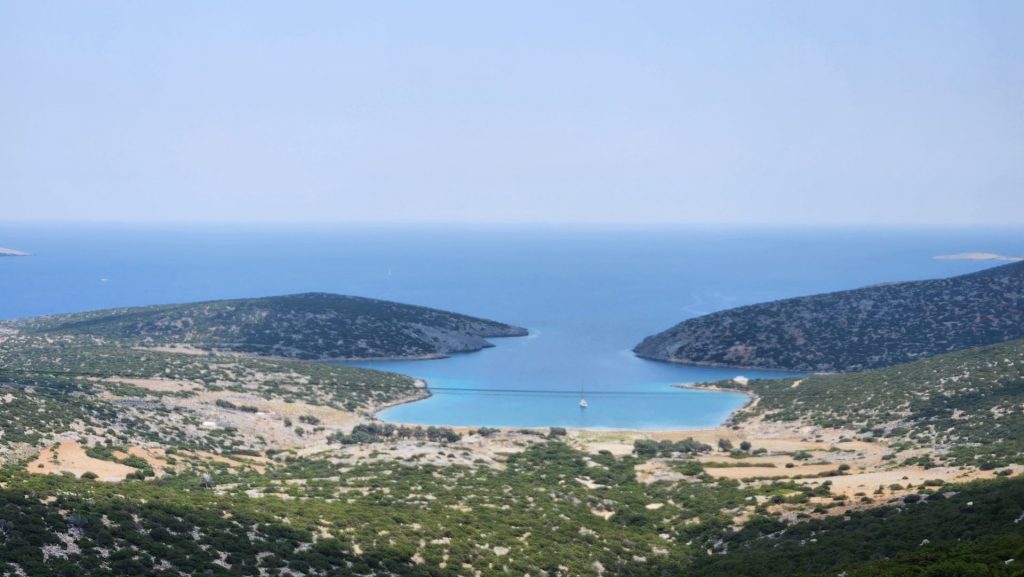
We happened upon this restaurant by chance. Are we ever glad we did! The food was wonderful. The staff was super friendly. The view was to die for. Oh, and Michael walked the short way from the car to the restaurant! Baby steps.
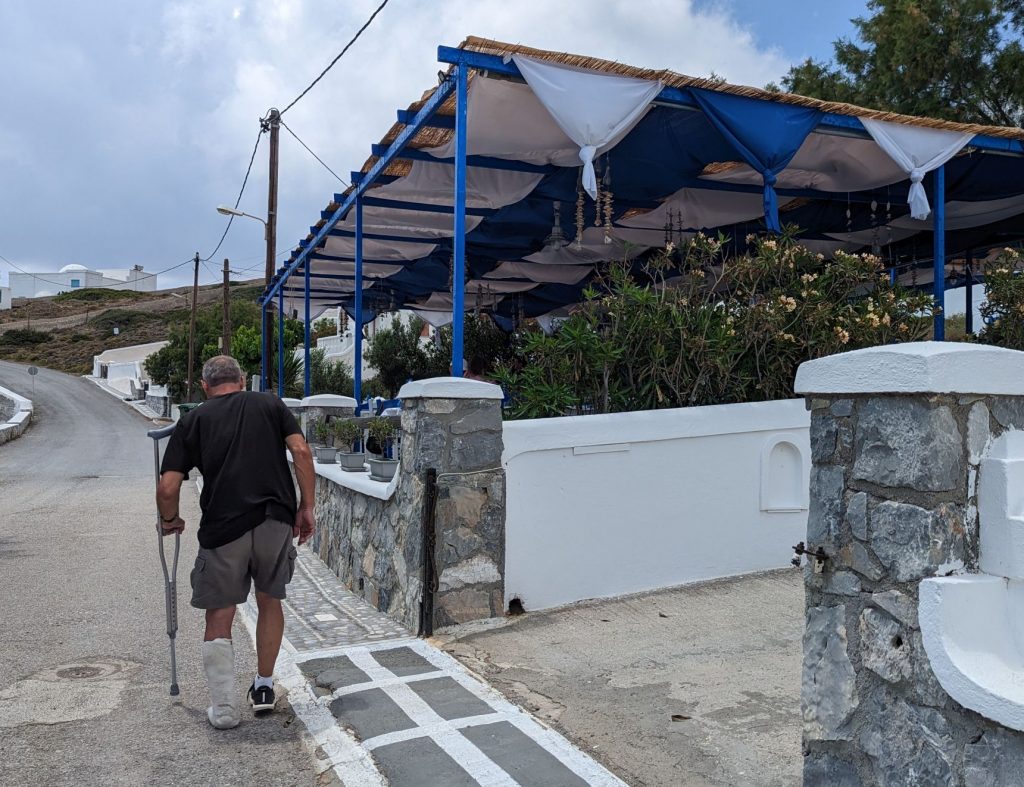
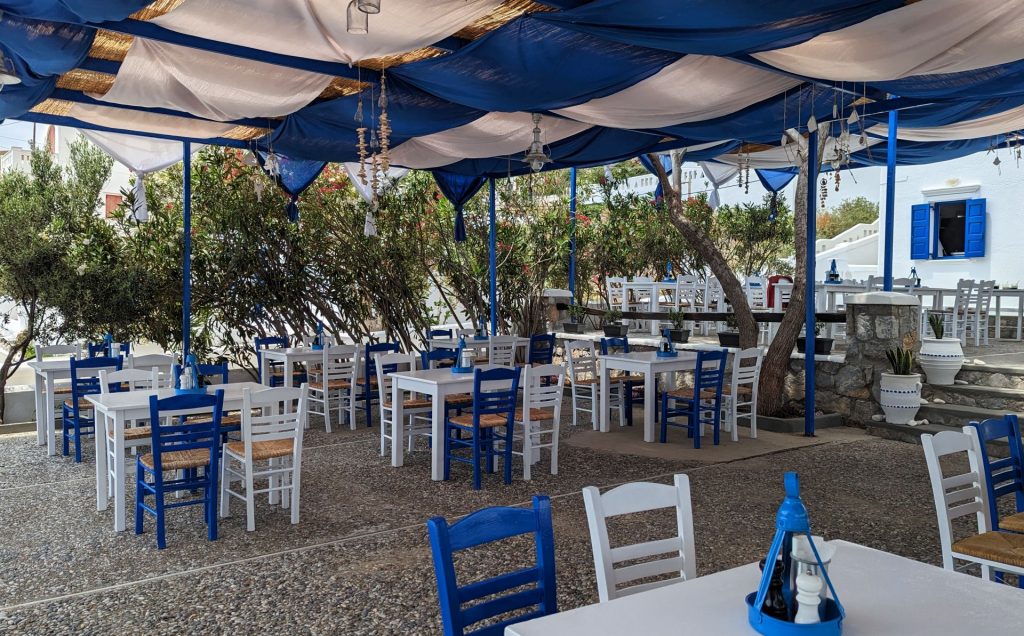
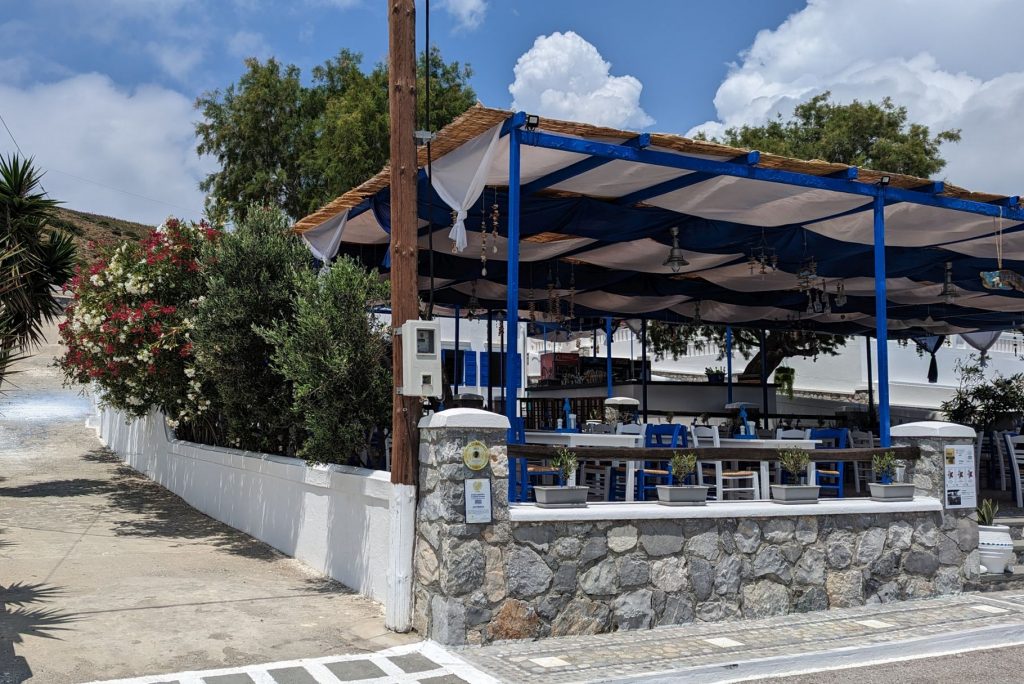
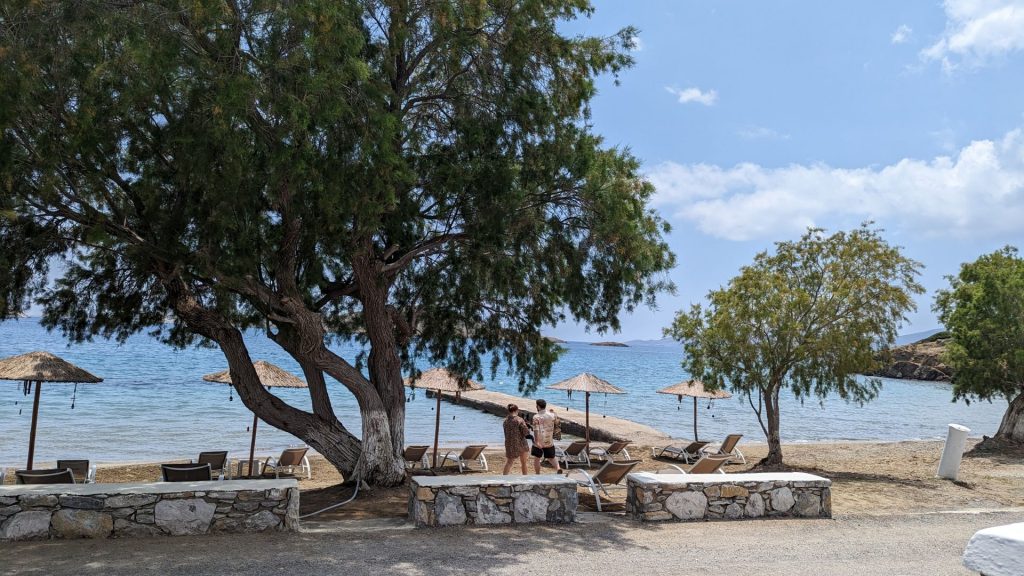
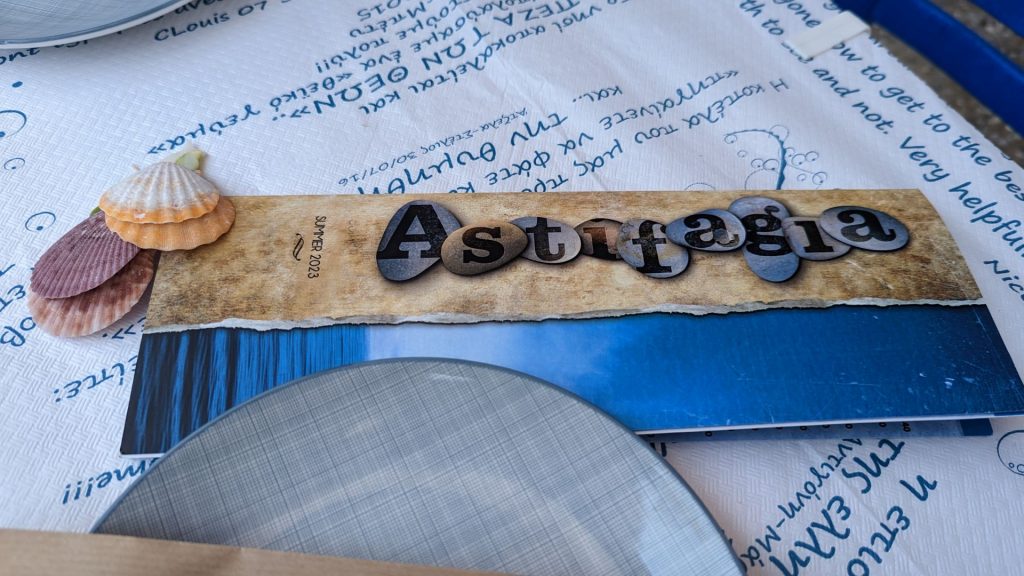
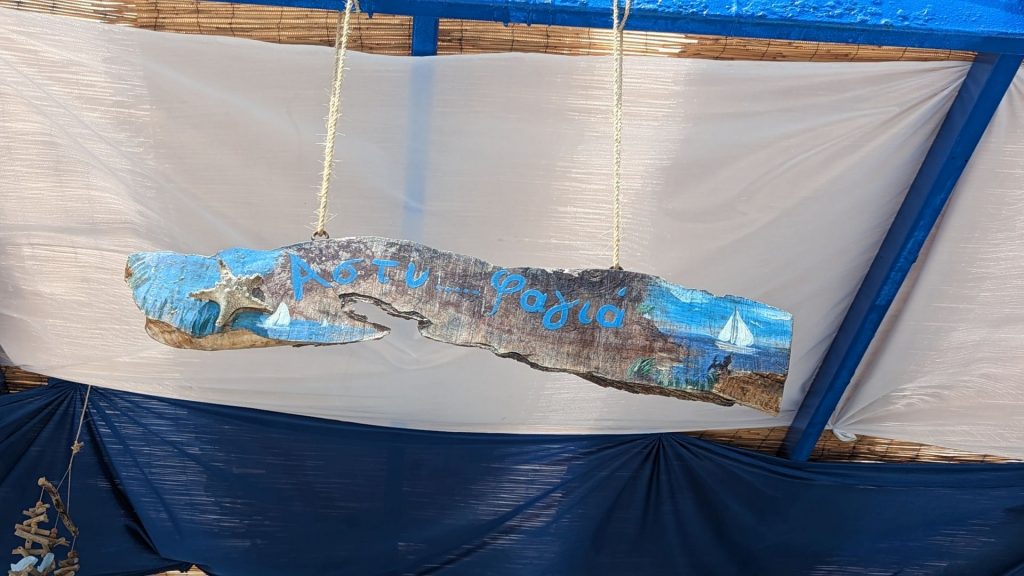
Sadly, we neglected to take pictures of the food. Trust us that it was good and true to Greek tradition. They brought us a surprise dessert of some kind of heavy cake (a thin round slice) topped with ice cream and chocolate sauce. Yum!
Apropos of nothing to do with the Greek islands, we wanted to share the gift (“Sun Take me to the Ocean”) from our granddaughter, Brookelyn. It has had this place of honor on Seahike since we bought her, but we never shared it with you.
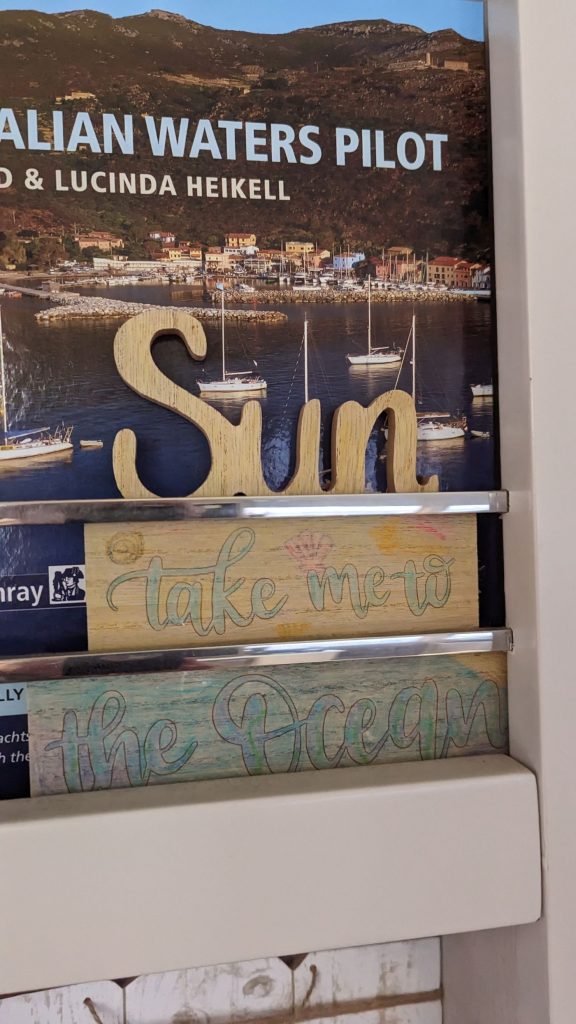
Here are some pictures of the small harbor town. Astypalaia is in the Dodecanese, but it has Cycladic architecture.
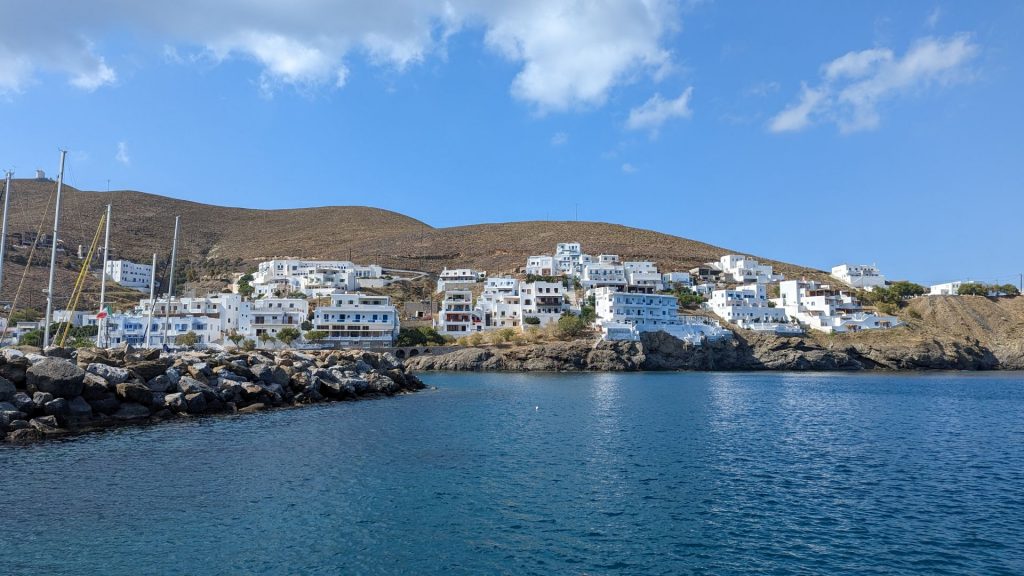
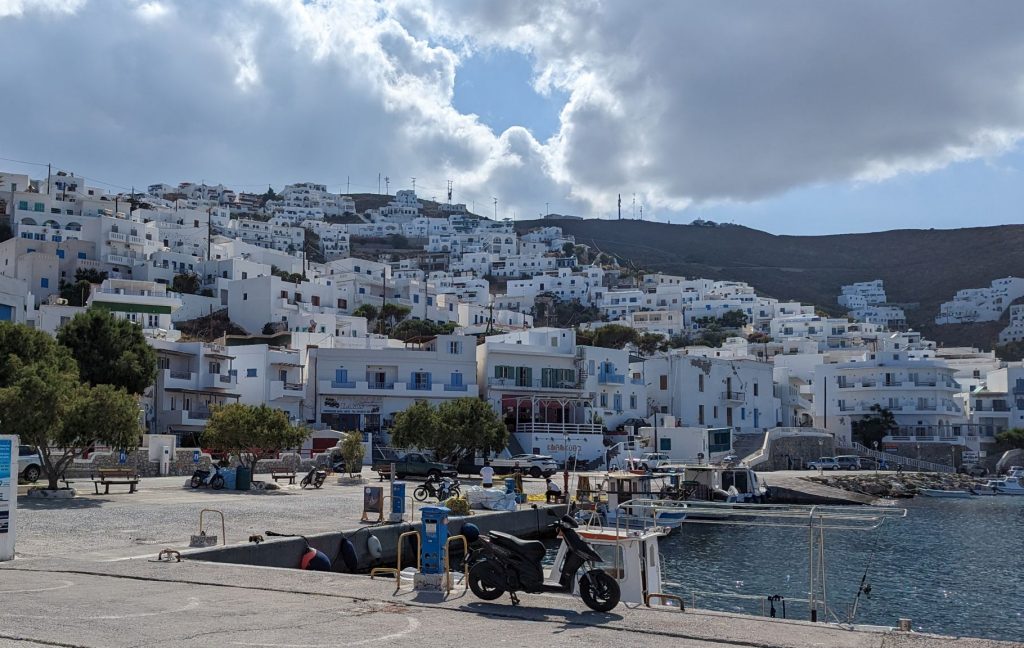
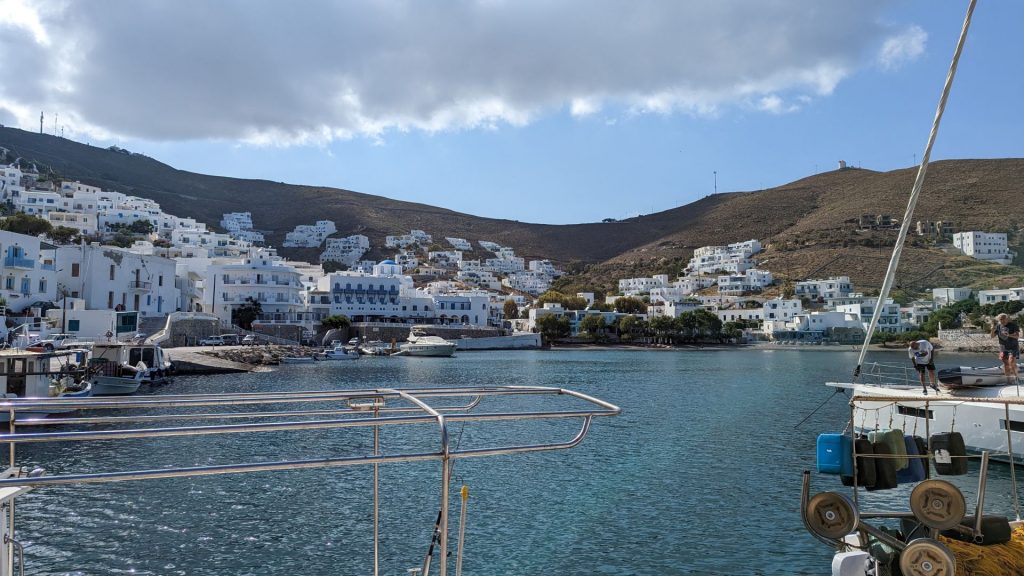
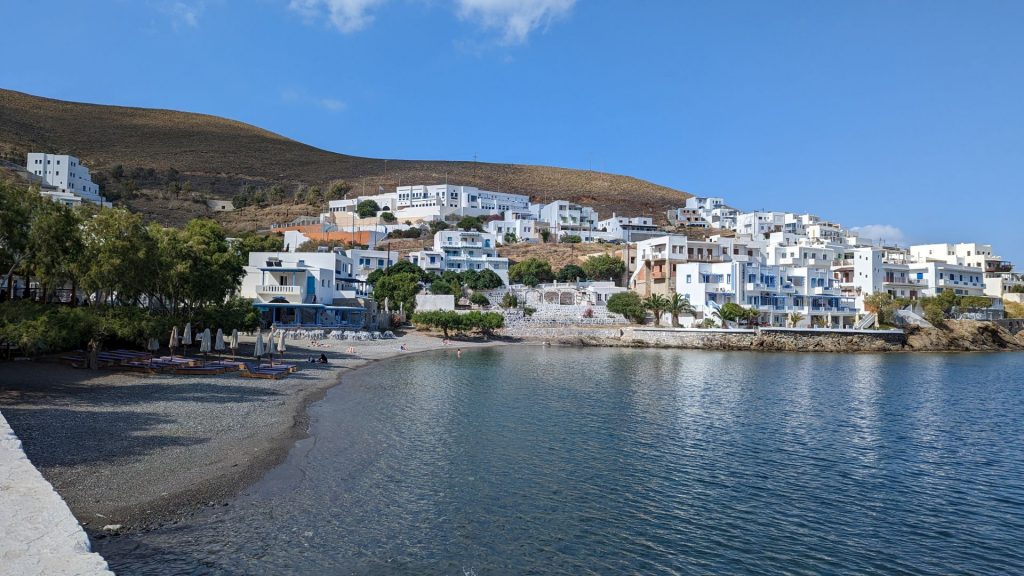
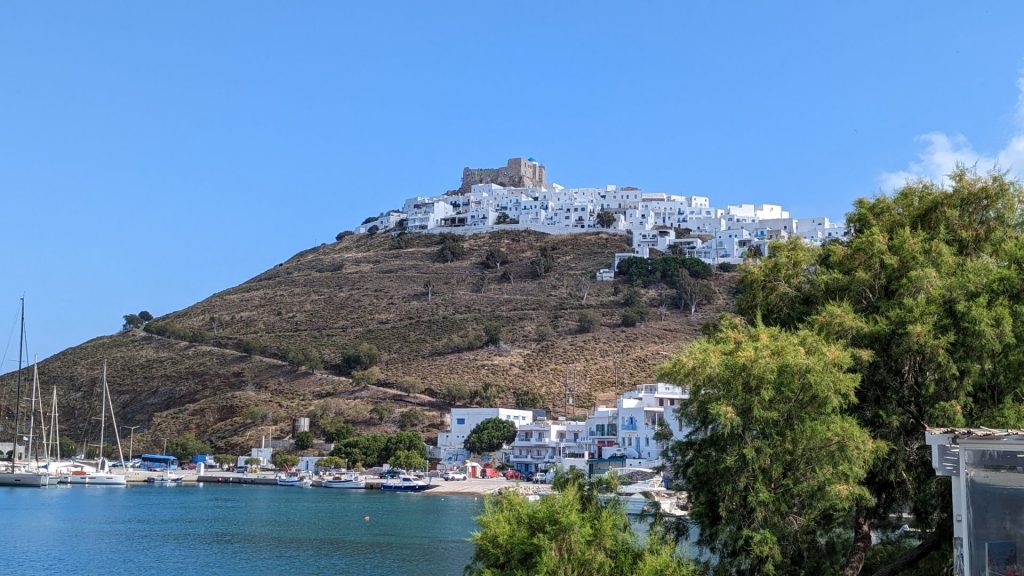
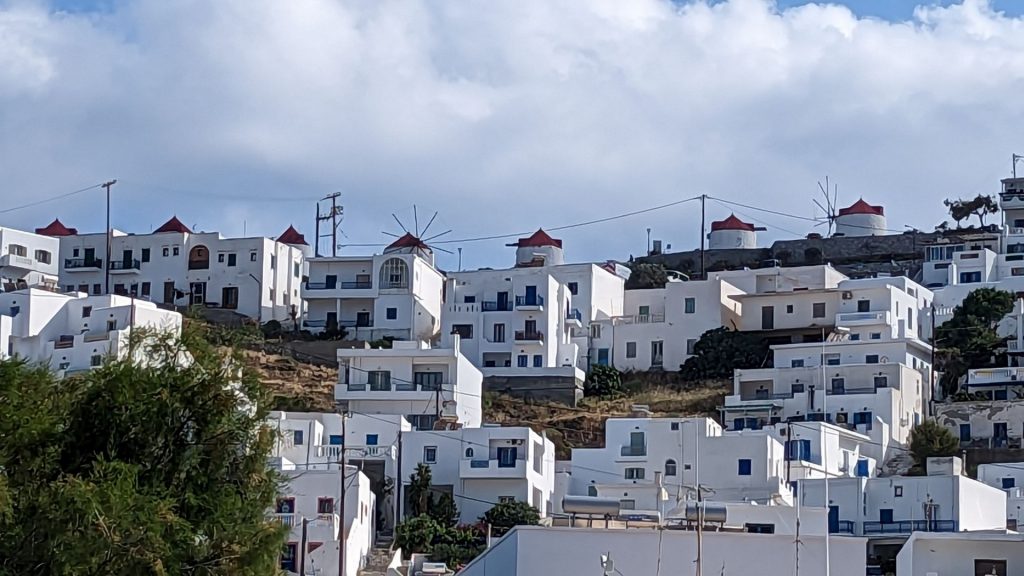
We sailed to Naxos overnight. We left at about 7:30 p.m. to arrive there somewhat early in the morning. Michael and I both struggled a bit getting our six hours of sleep during our allotted sleep time, so we were both a bit groggy in Naxos. As a result, our tour of the island was rather short. But we are happy with what we saw.
Leaving Astypalaia:
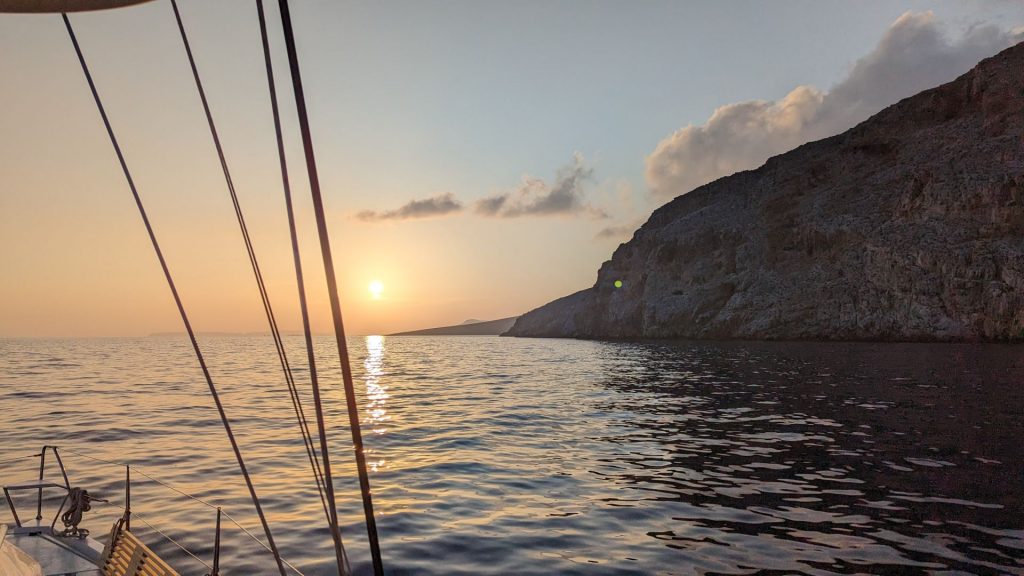
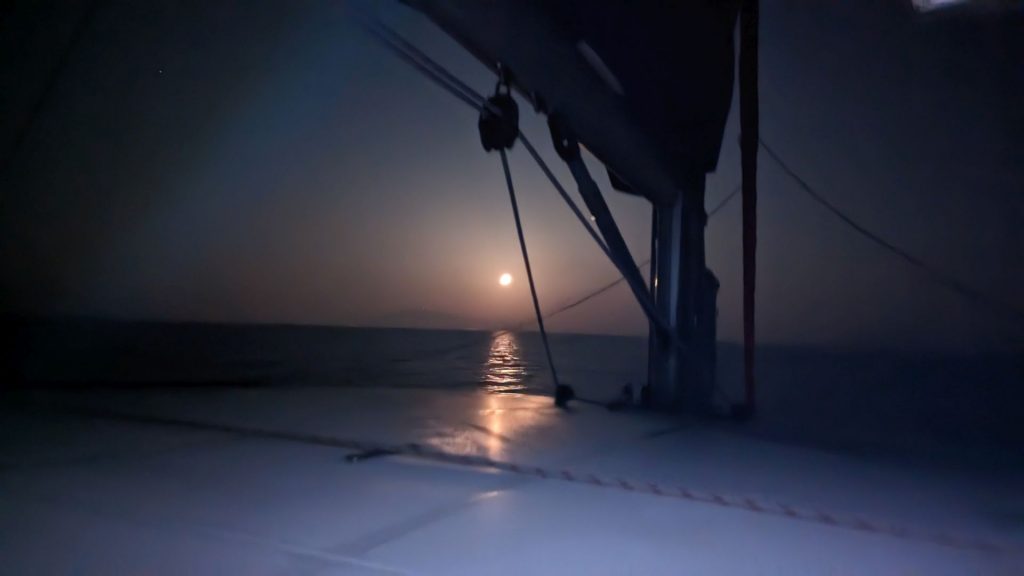
I woke up for my 3:00 a.m. shift to find Michael’s cast, cast-aside. I knew he was going to do this, but there it was in living color!
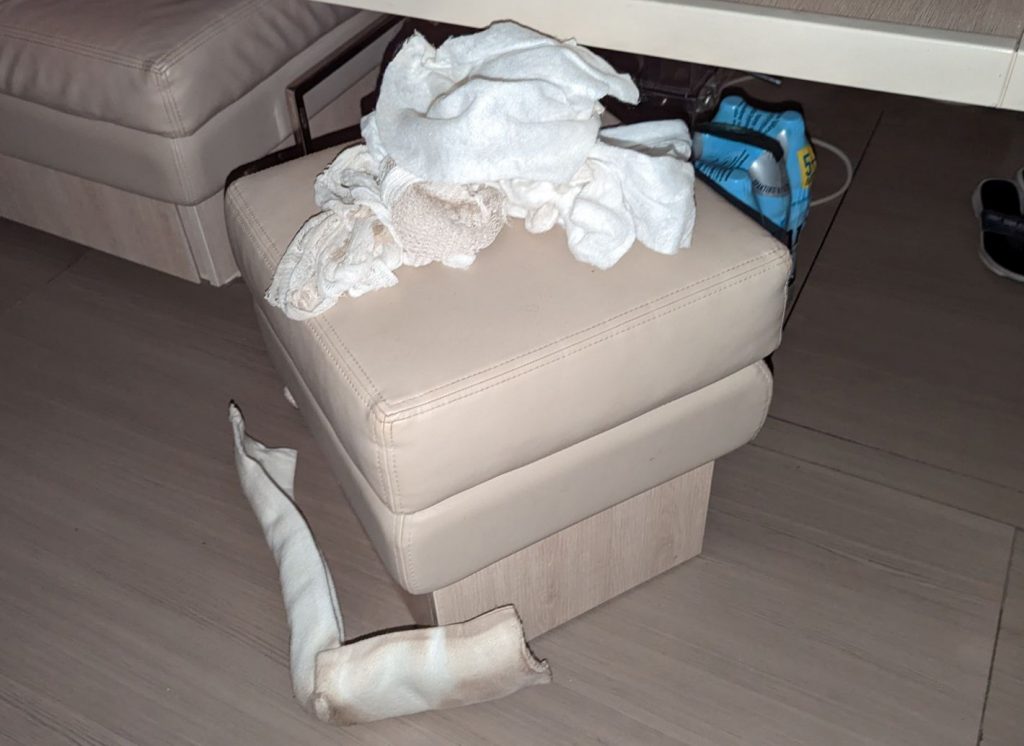
So, an update on his leg. He had been in the cast for five weeks when he removed it. The doc had said he would be in the cast for “five or six weeks,” and Michael chose five. No, we didn’t see a doc before he did that. His leg is sore so we are still using the wheelchair if the distance is longish. He decides.
This light is there to tell you, “Do not hit this rock.”
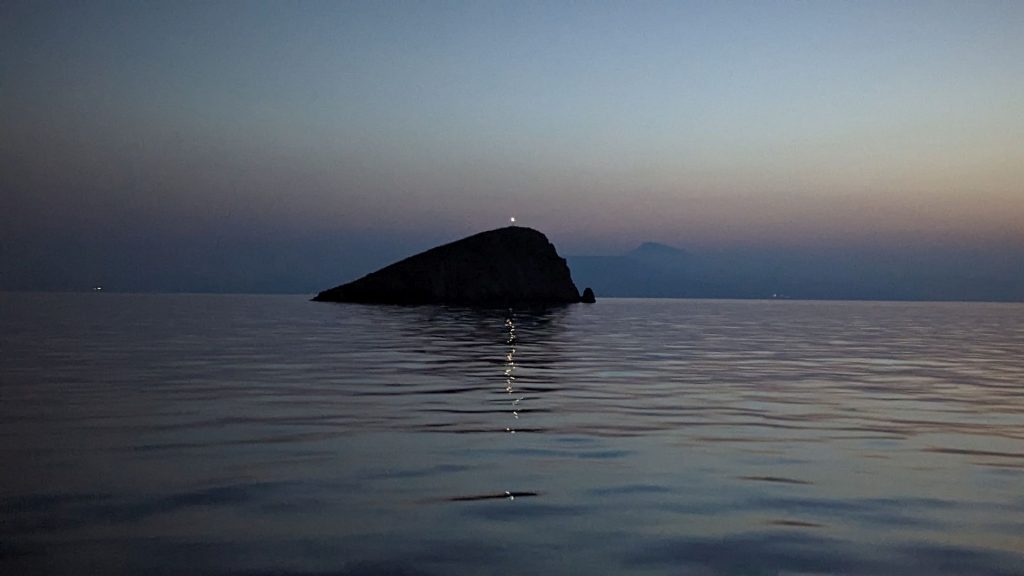
Good morning!
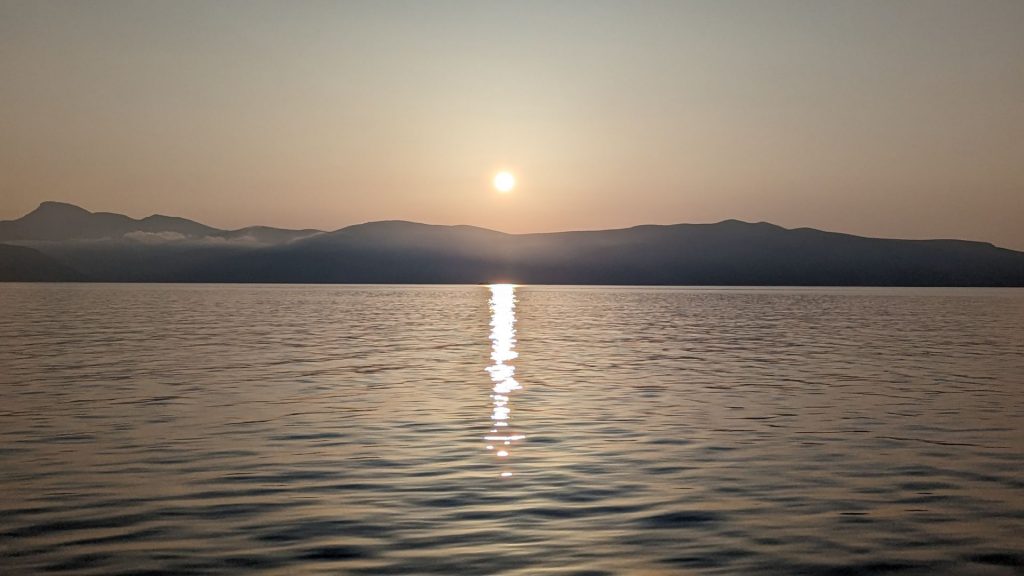
Coming into Naxos Harbor.
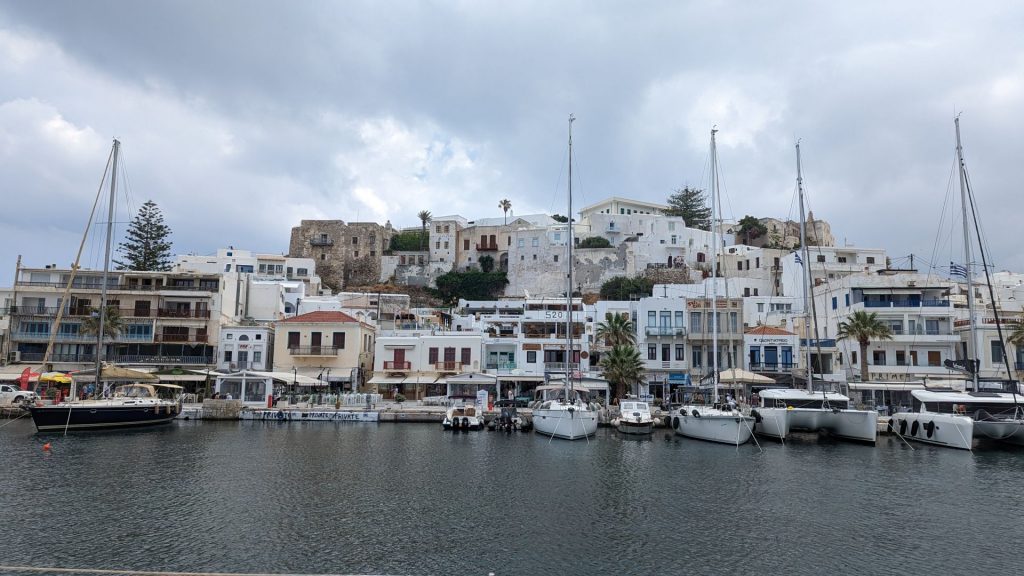
There was no room on the sides of the docks for us to moor side-to so they put us at the end of a dock. That was a weird setup given how narrow the dock was. Here we are, with just a small portion of the starboard side near the dock. We had a long line going to the bow, a short one to the stern and two short spring lines. Oh, and a lot of fenders by the dock. This picture also happens to contain a shot of our pretty new passerelle. (This picture was taken before we added the second spring line.)
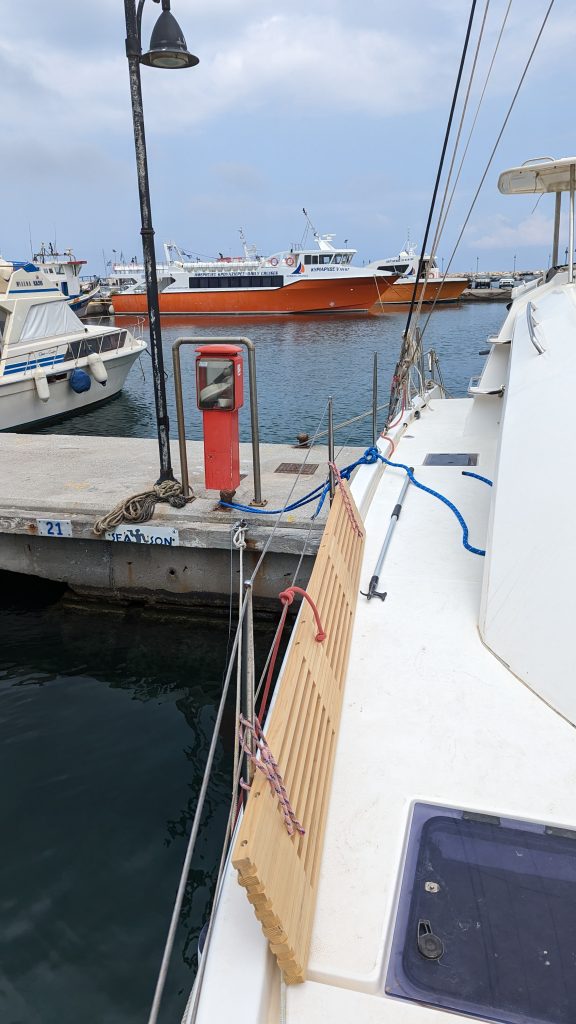
It was a BIG step up to get on the boat.
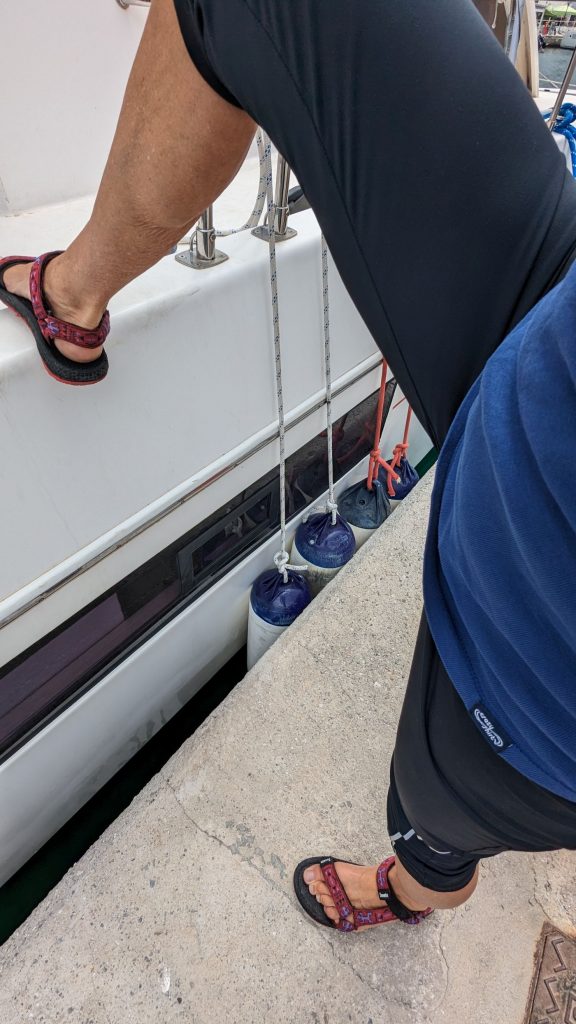
We visited the Temple of Demeter, Chalki (Halki), and the Vallindra Kitron Distillery. We were both kind of sleepy at that point so we called it a day and went back to Seahike. Here are some pictures of our outing. It was a cloudy day so the pictures are a tad dark.
But first, some information about the Temple from greeka (an online guide to Greece):
This magnificent temple has been made exclusively of the finest quality Naxos marble and dates back to the 6th century BC. As Demeter was the Olympian goddess of agriculture, harvest, and fertility, people built temples dedicated to her on fertile lands.
Excavations have led to the conclusion that the area was serving religious purposes since the late Mycenaean Era. During that time, places of worship used to be open-air.
The temple of Demeter in its current form was built around 530-520 BC, in the Doric architectural style that later influenced the Parthenon of Athens. It is of major archaeological importance, and some of its best-preserved sections have helped experts gain a better understanding of the architecture of that period.
Its construction took place under the rule of Lygdamis, the tyrant of Naxos. Lygdamis had planned to create some of Greece’s most impressive monuments in Naxos, including the Temple of Demeter and Portara, which supposedly would be a part of a great temple dedicated to Apollo that was never completed.
The restoration
The remains of the ancient temple of Demeter were discovered by the archaeologist Nikolaos Kontoleon in 1949. The excavations lasted from 1976 to 1995. Fragments of the temple were recovered from all around the area, although many had been looted.
In the mid-1990s, a group of German archaeologists restored the temple partially to revive its ancient glory.
Today, the Temple of Demeter is one of the most beautiful ancient Greek temples, set in a picturesque environment in the area of Sangri.
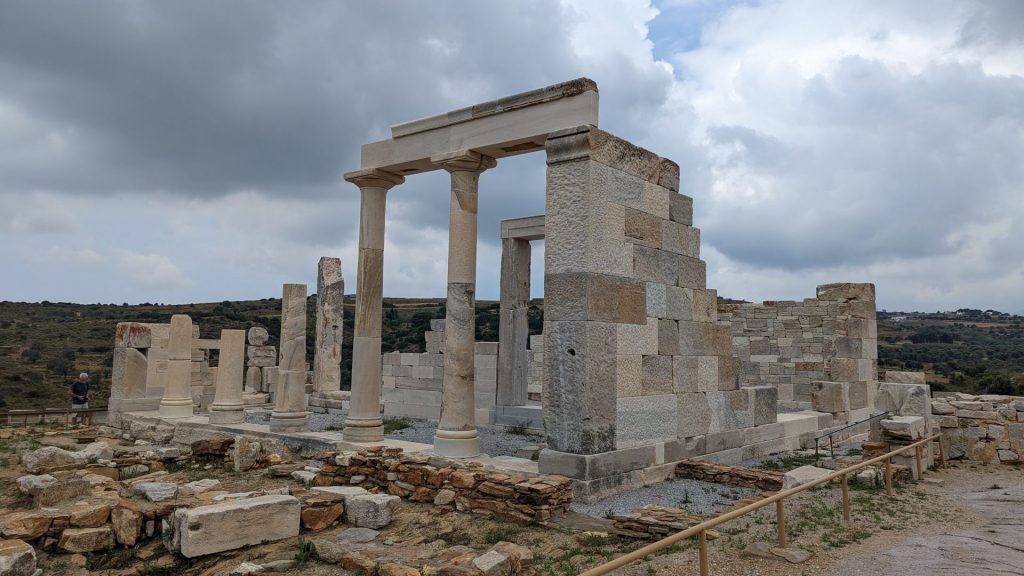
Here are some pictures of the town where we had lunch and visited the distillery. . . . and might have purchased a few bottles of liqueur.
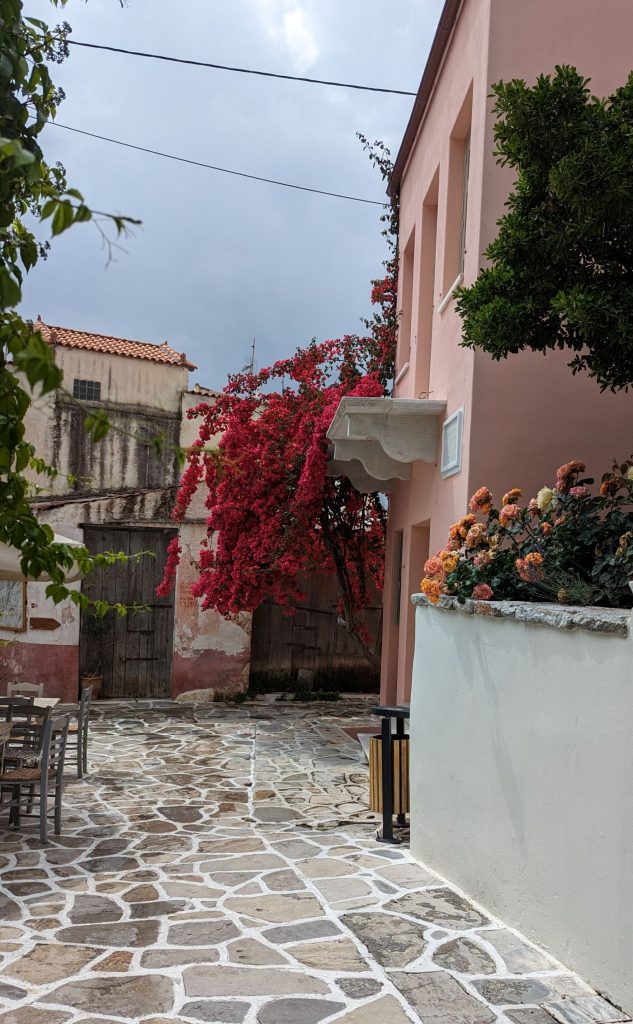
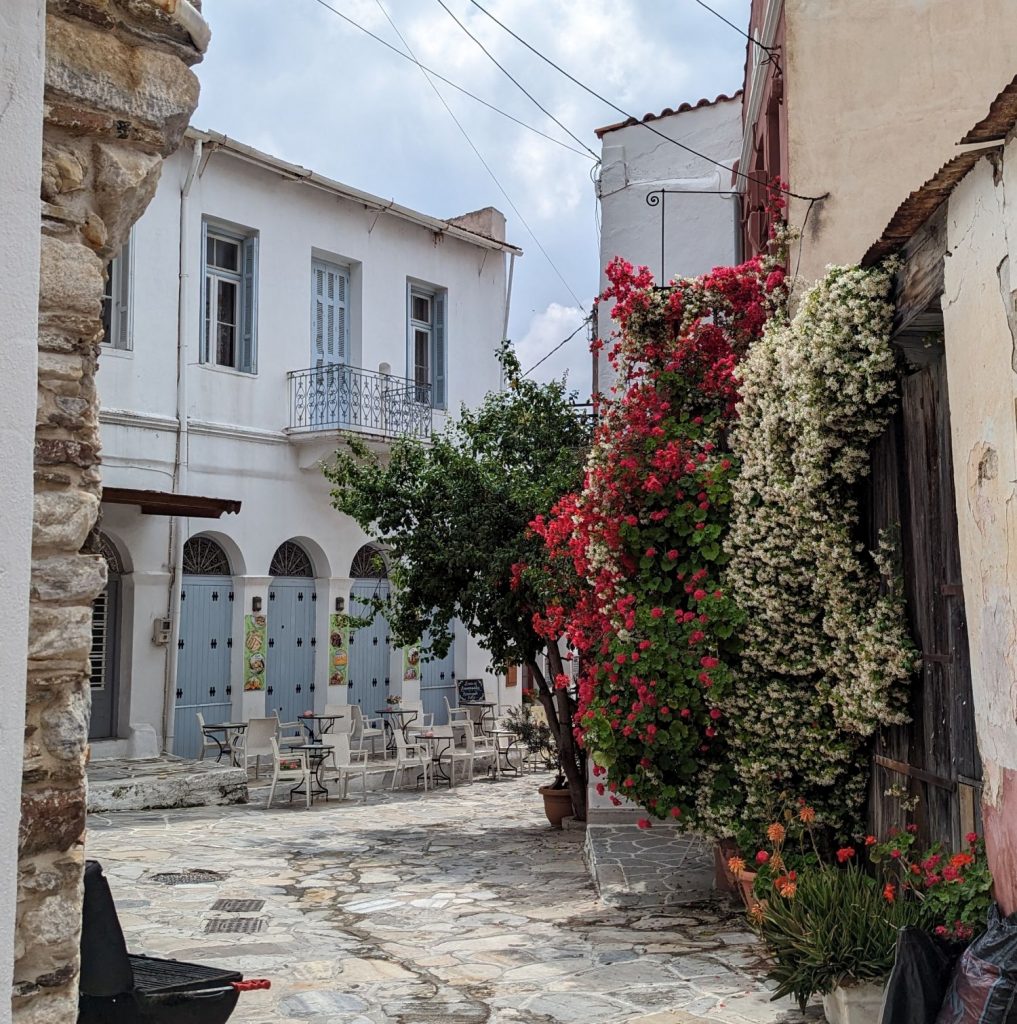
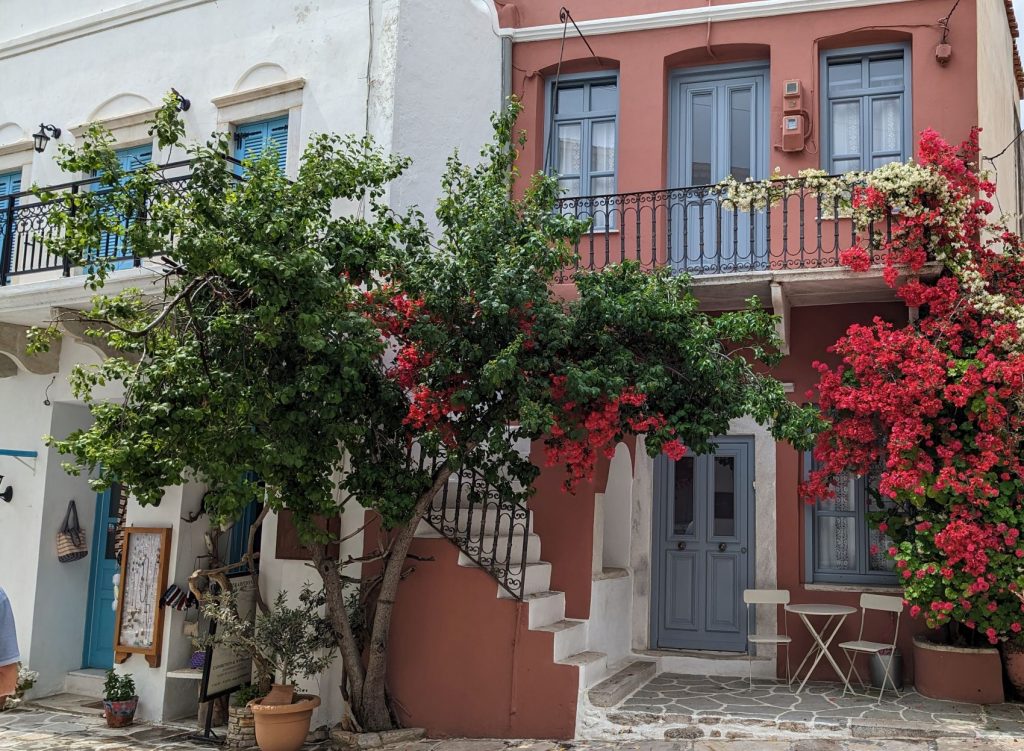
This is the citron fruit (if you look it up online, you will see that most of them are yellow. I don’t know why what we were shown was green). This particular one was about the size of a grapefruit.
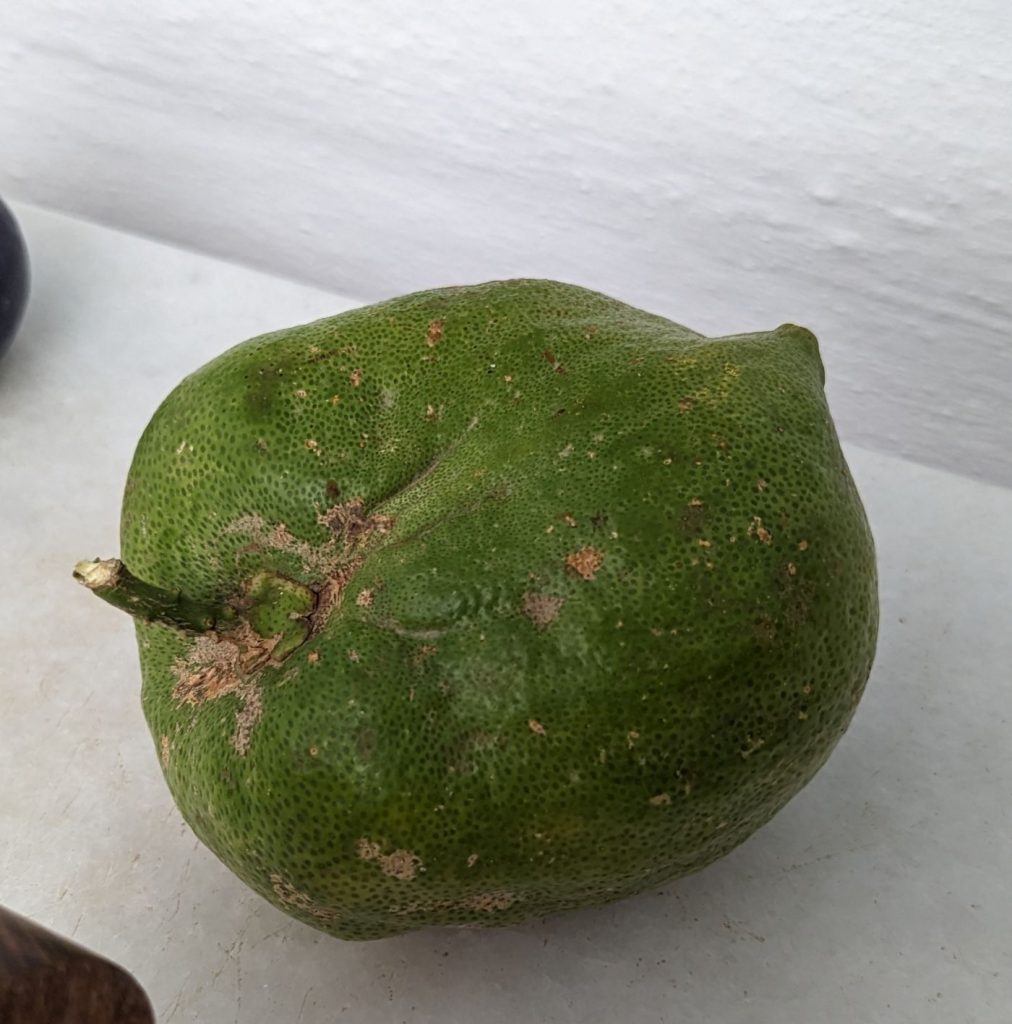
The liqueur is made from the leaves. They contain the essential oils. The plant they showed us had very few leaves. Maybe the rest have been used??
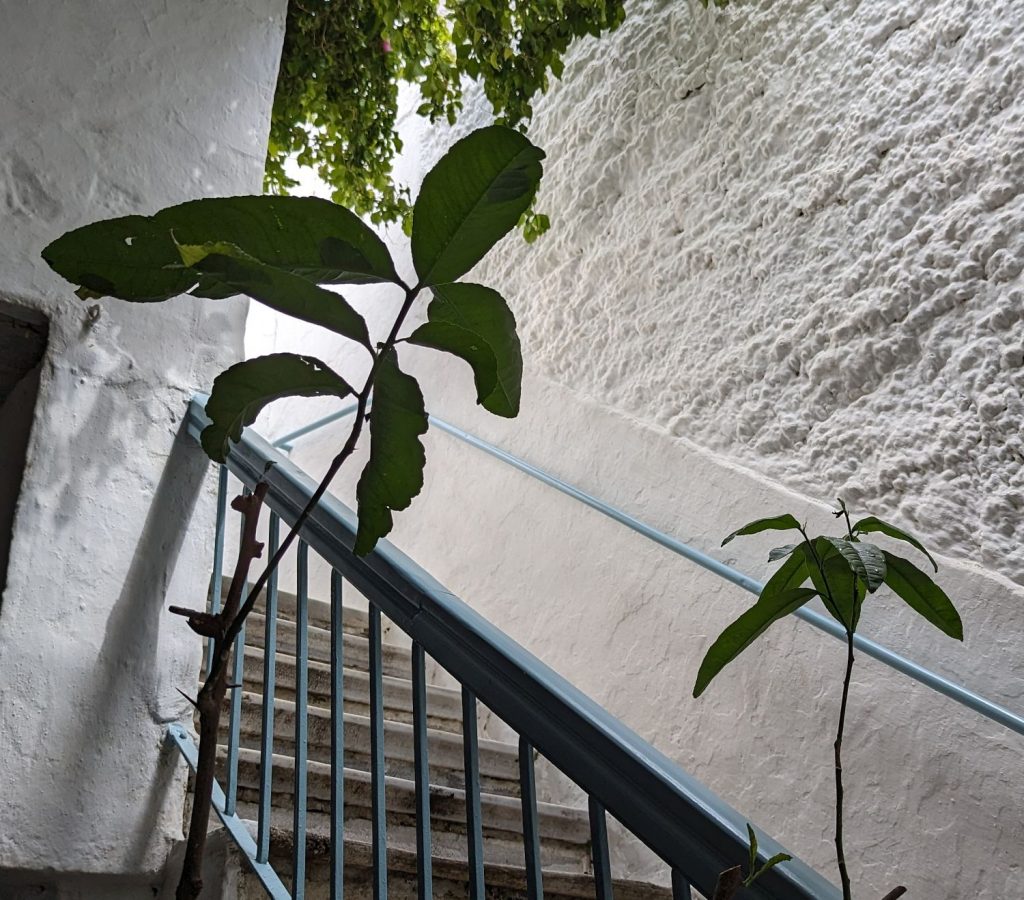
The liqueur is very good. We tried three different kinds, which they distinguish by changing the color: yellow, clear, or green. The green is the sweetest. (The flier they hand out with it shows the citrons that are yellow in color with a rough yellow skin.) As you can see, the distillery has been around since 1896!
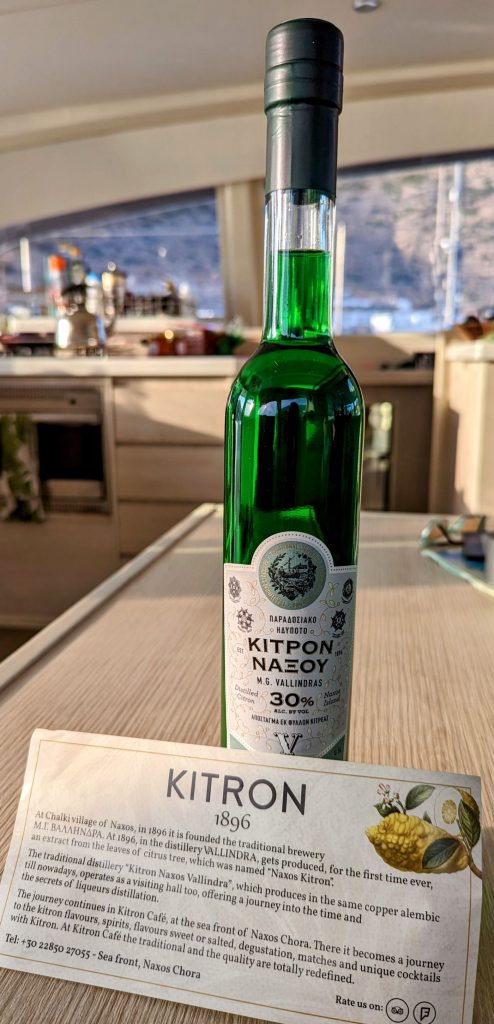
Here are some pictures of the scenery.
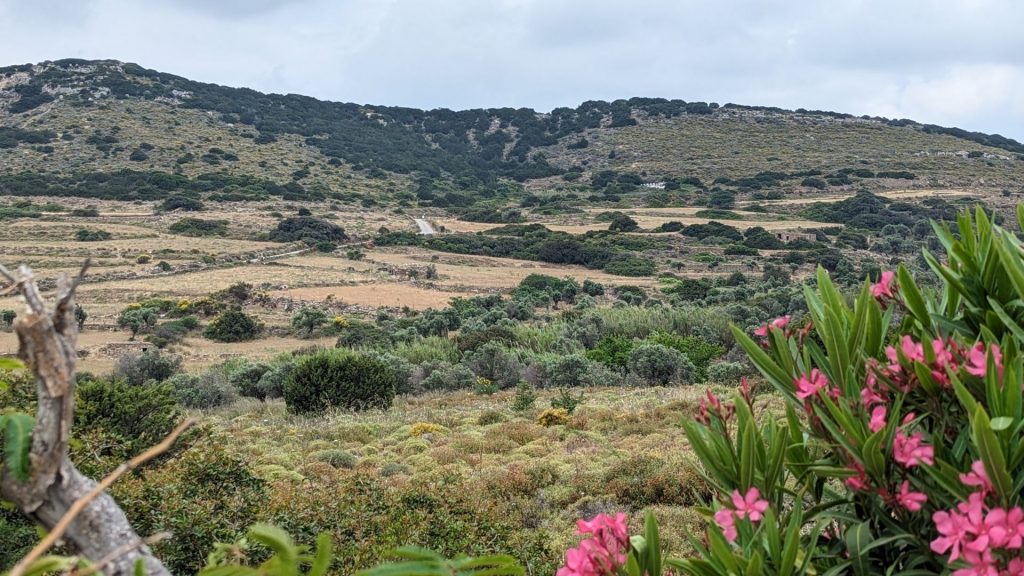
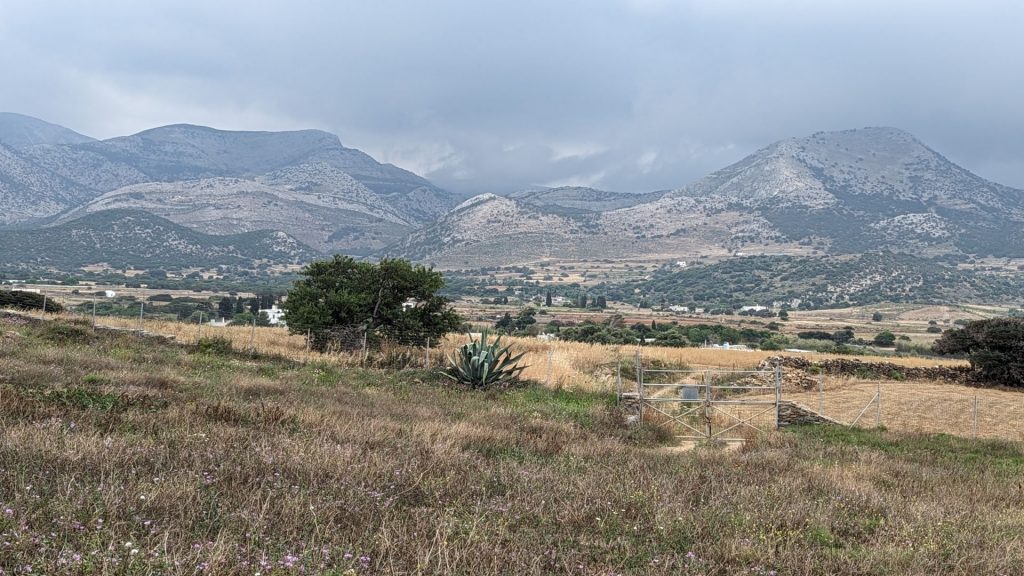
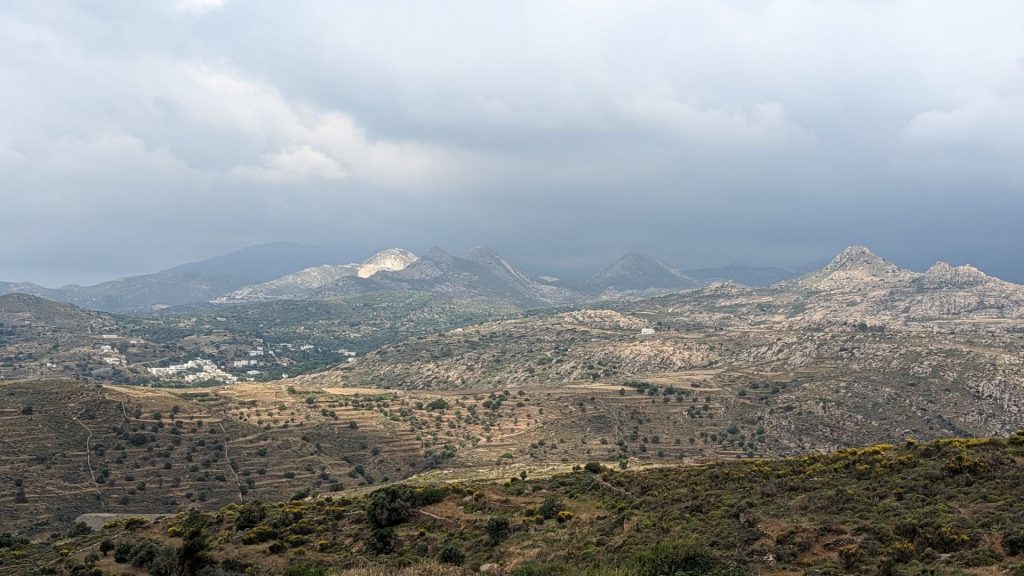
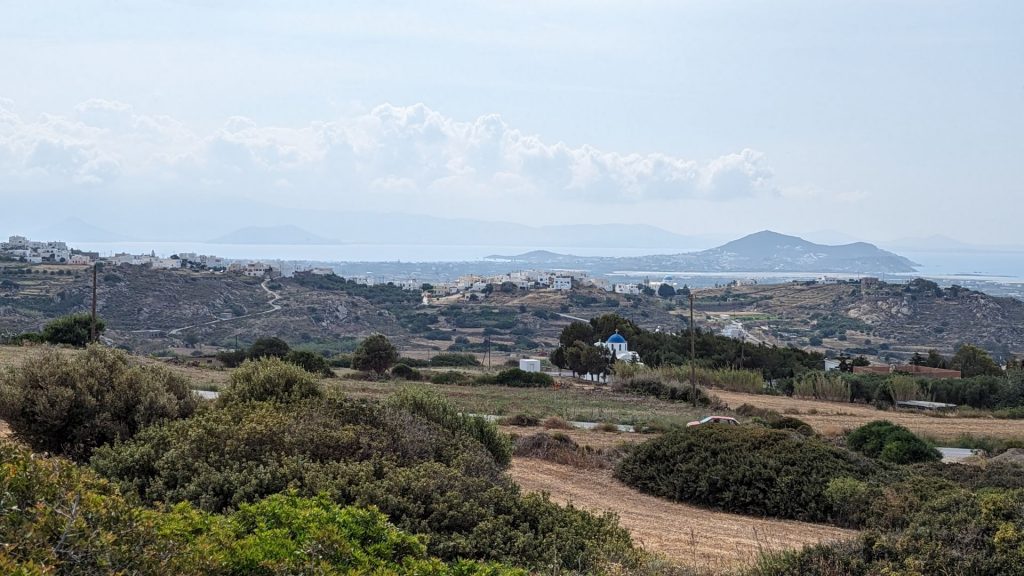
We spent one night in Naxos, then went to Paros. We mounted the US flag on the topping lift. We had been holding off on mounting our flag because we’ve been looking for a flagpole. We decided it was time to hoist the flag in another way. It is good to see it flying!
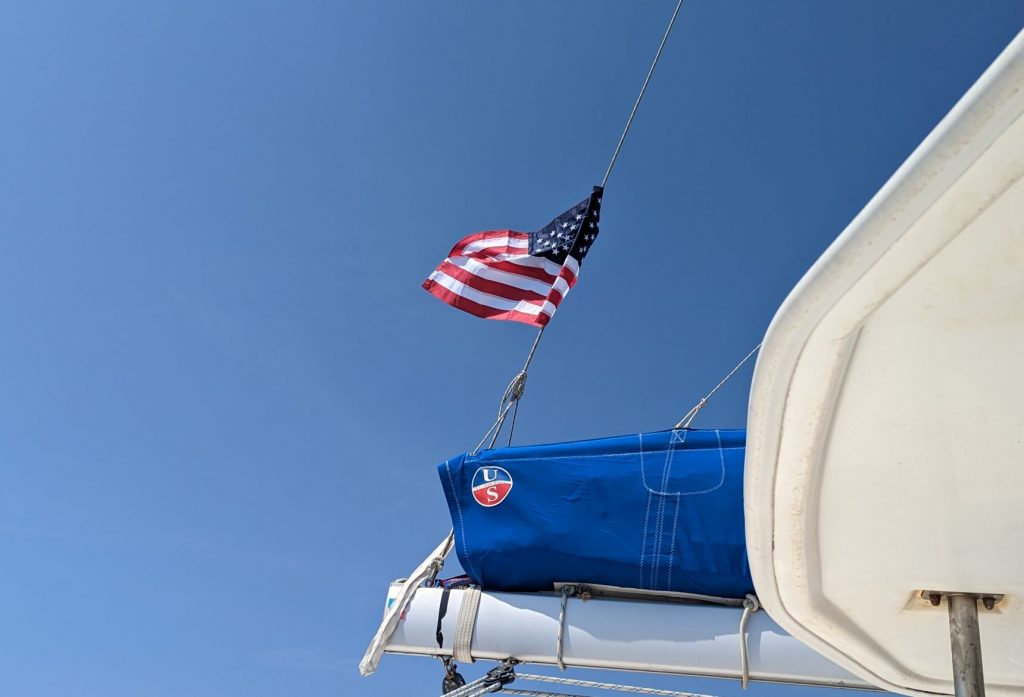
Leaving Naxos: I love the outline of the hills.
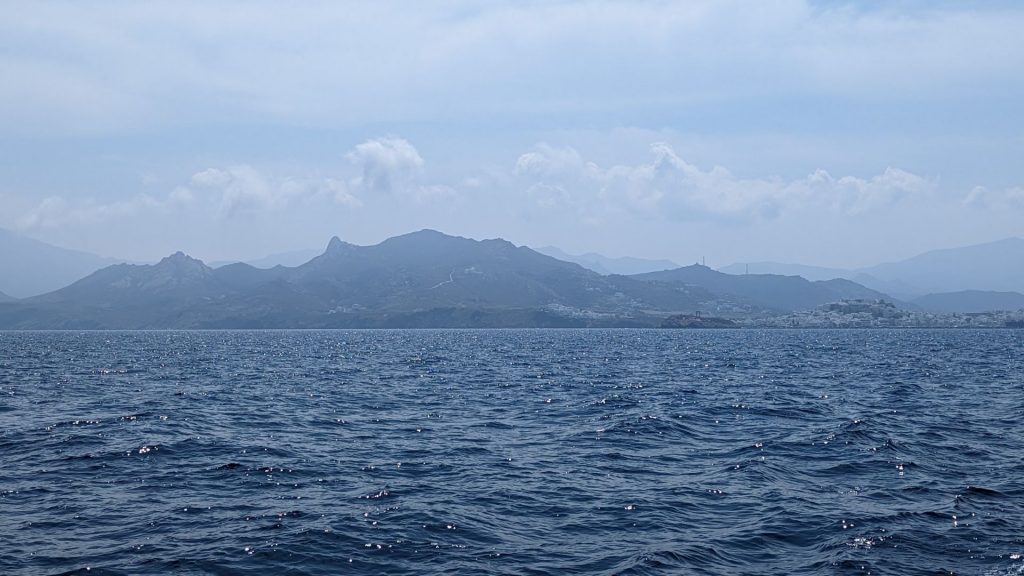
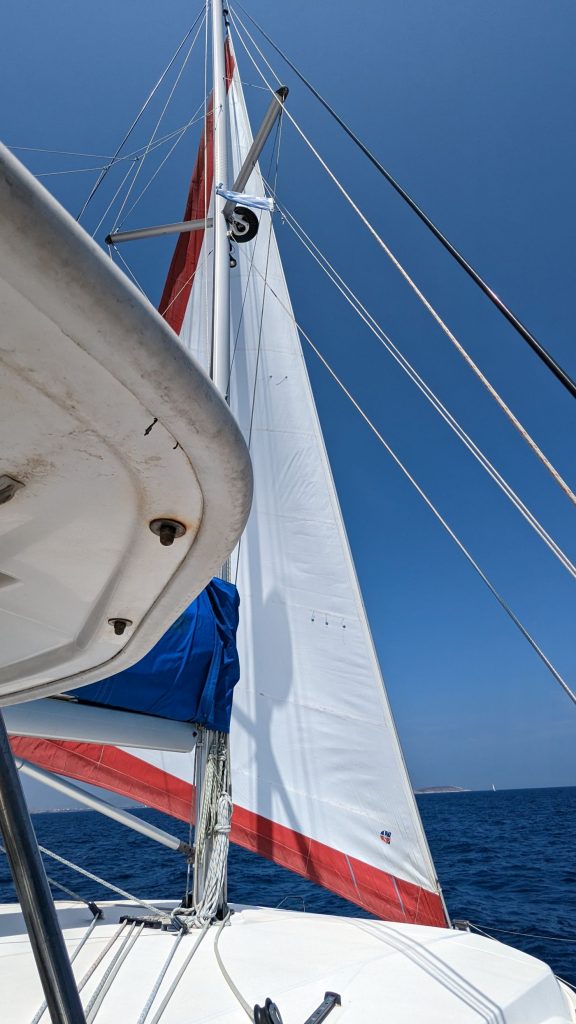
Getting close to Paros!
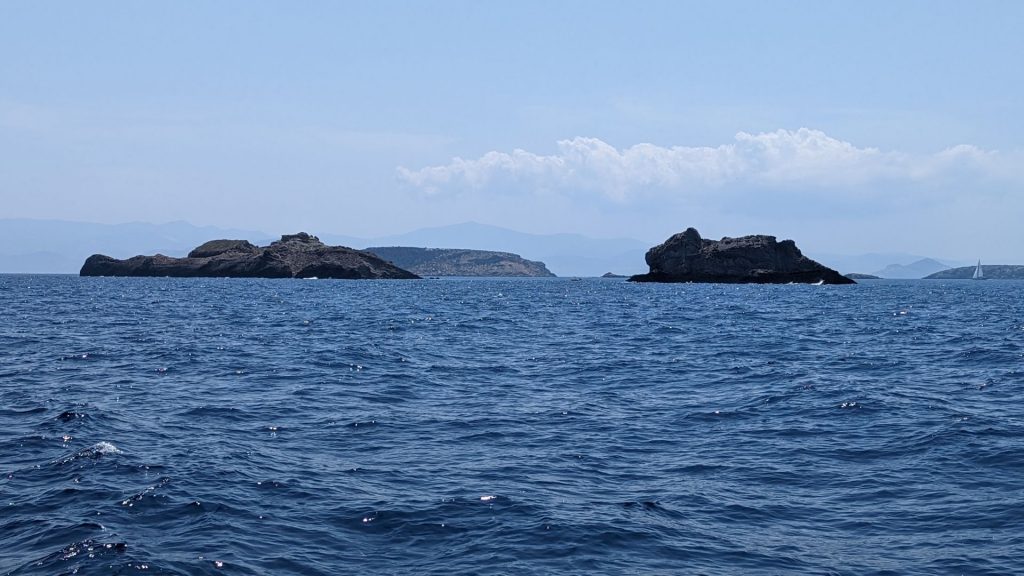
We didn’t go ashore in Paros. We anchored out and waited for our friend and former sailing instructor to join us on Seahike.
This was an amazing coincidence. She and nine of her friends just happened to have chartered a sailboat in Paros and were going to be at the exact same anchorage we had planned to be at on the same day. What fun it was to “run into” someone from half-way around the world! We had a wonderful visit with Vicki. We hope she will join us when we cross the pond next fall.
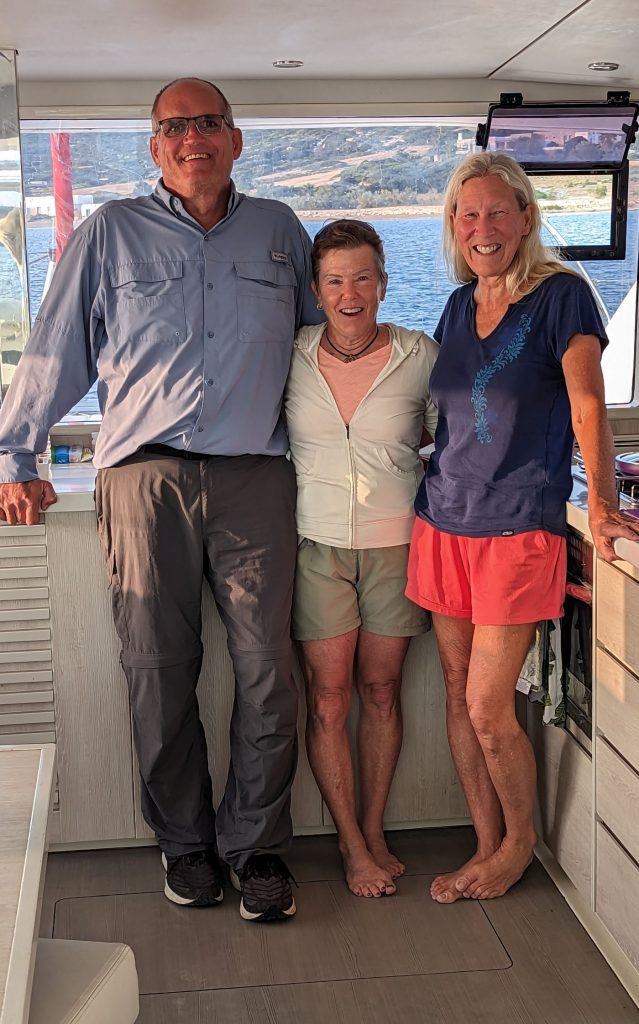
That’s it for this post. See you next week!
